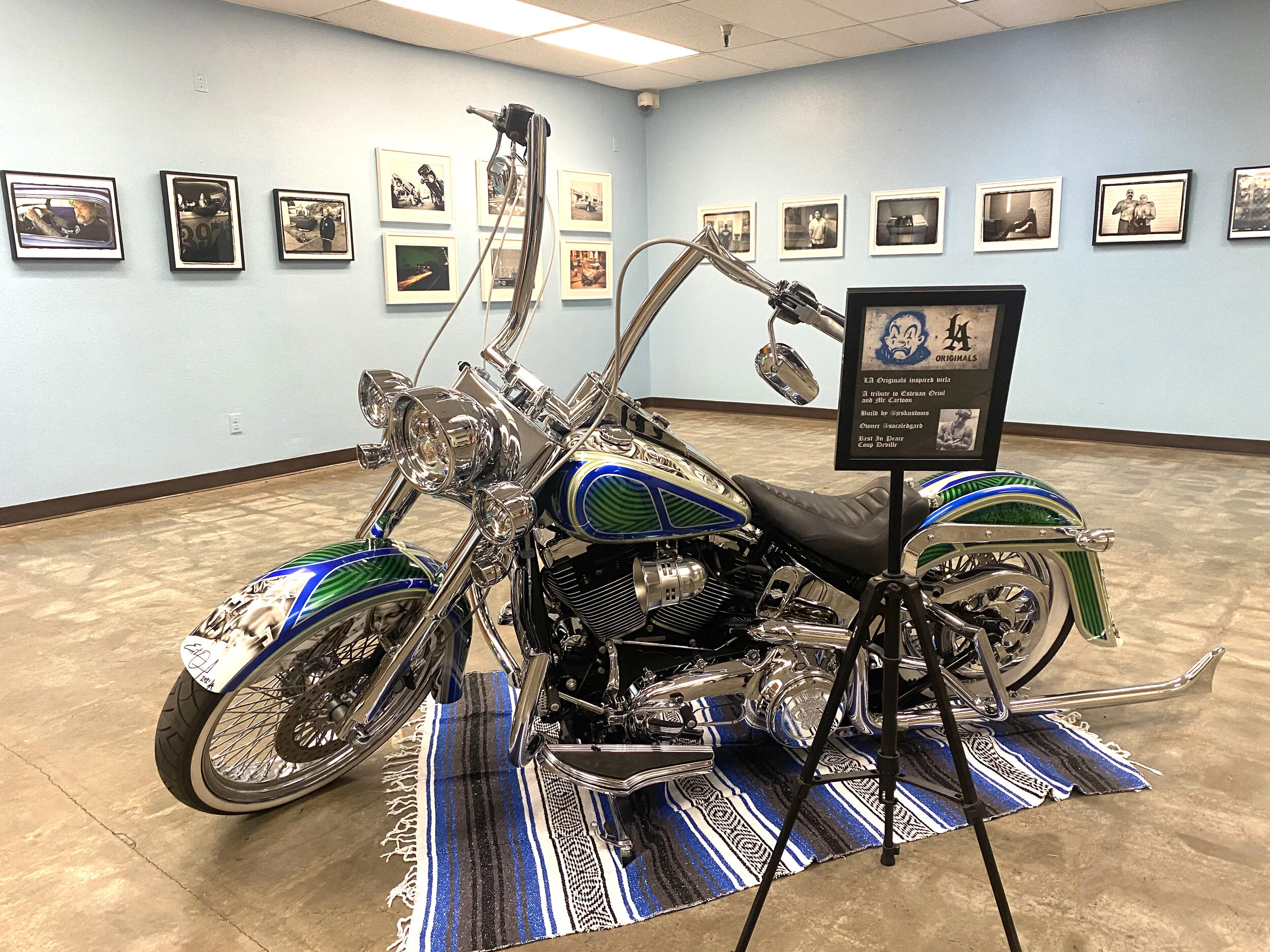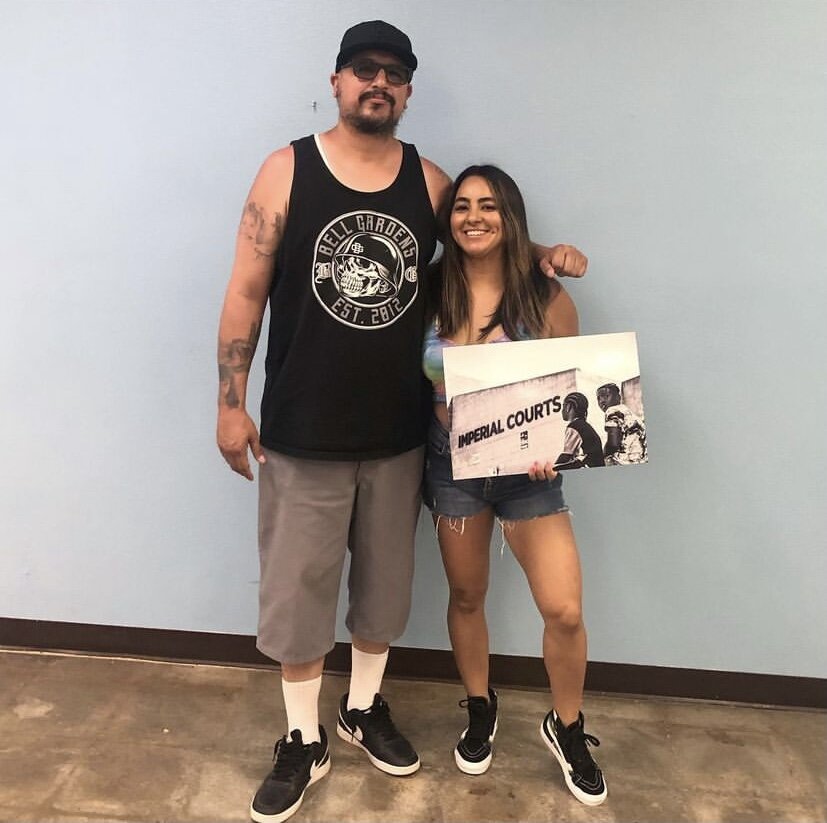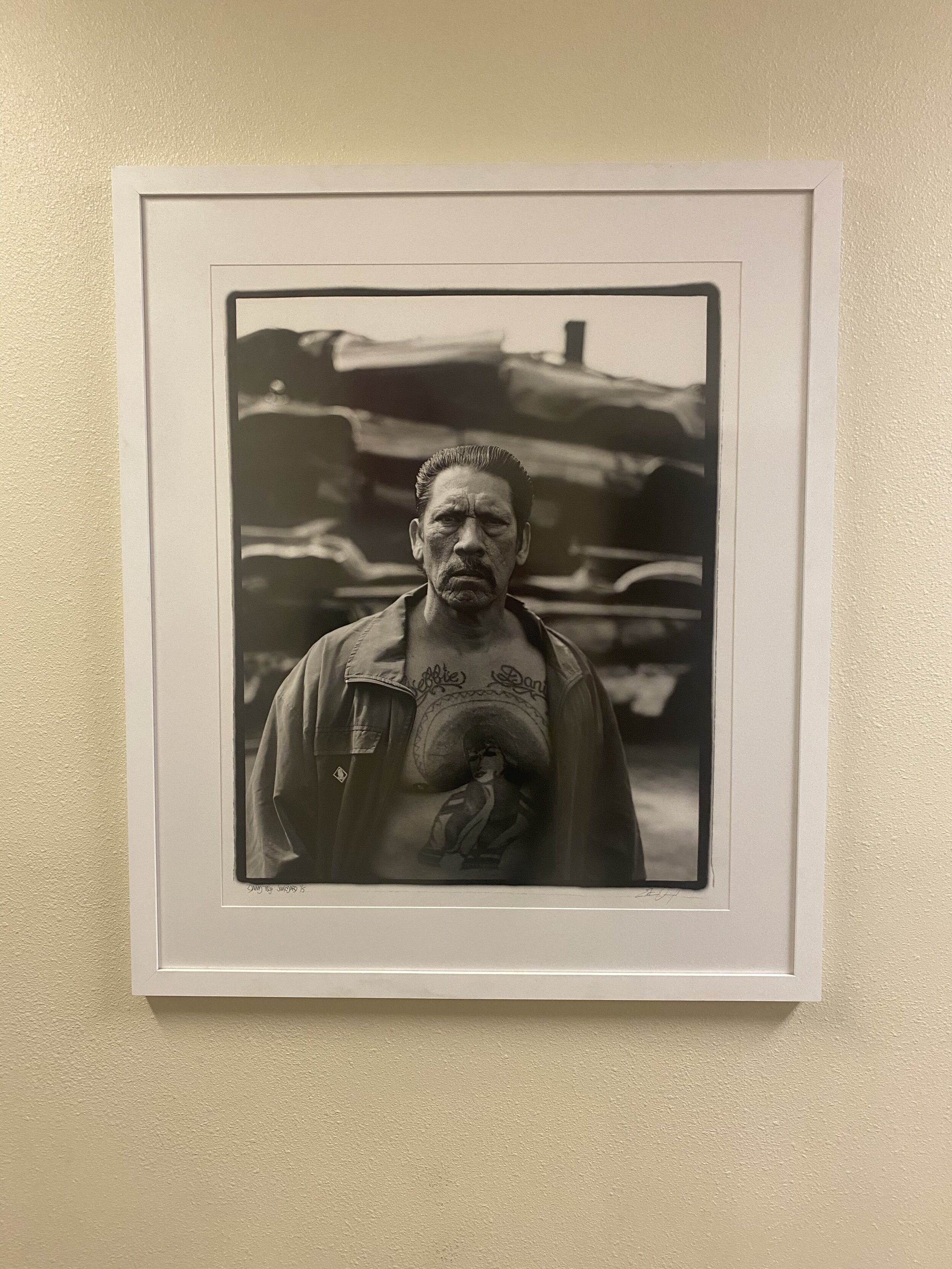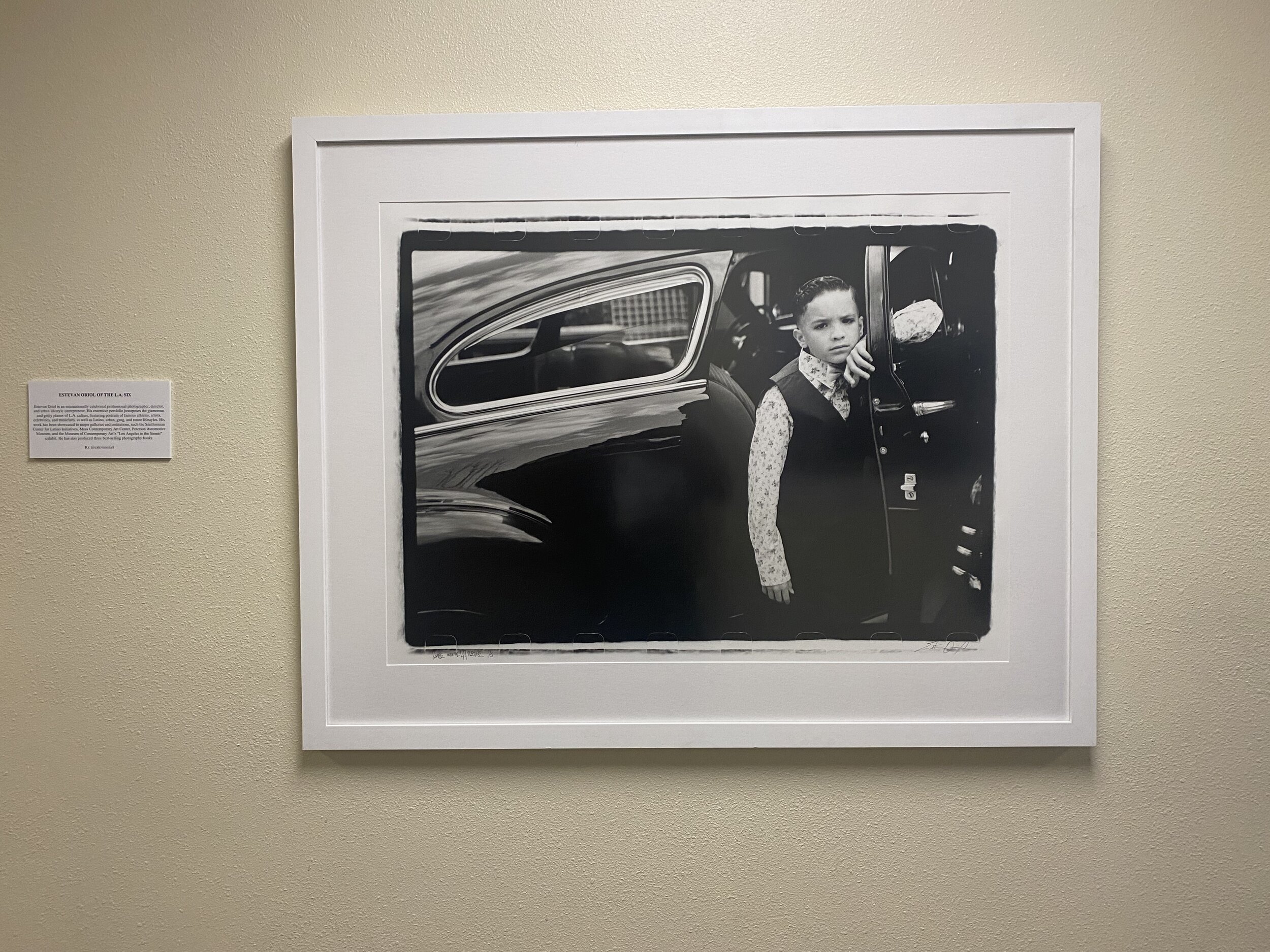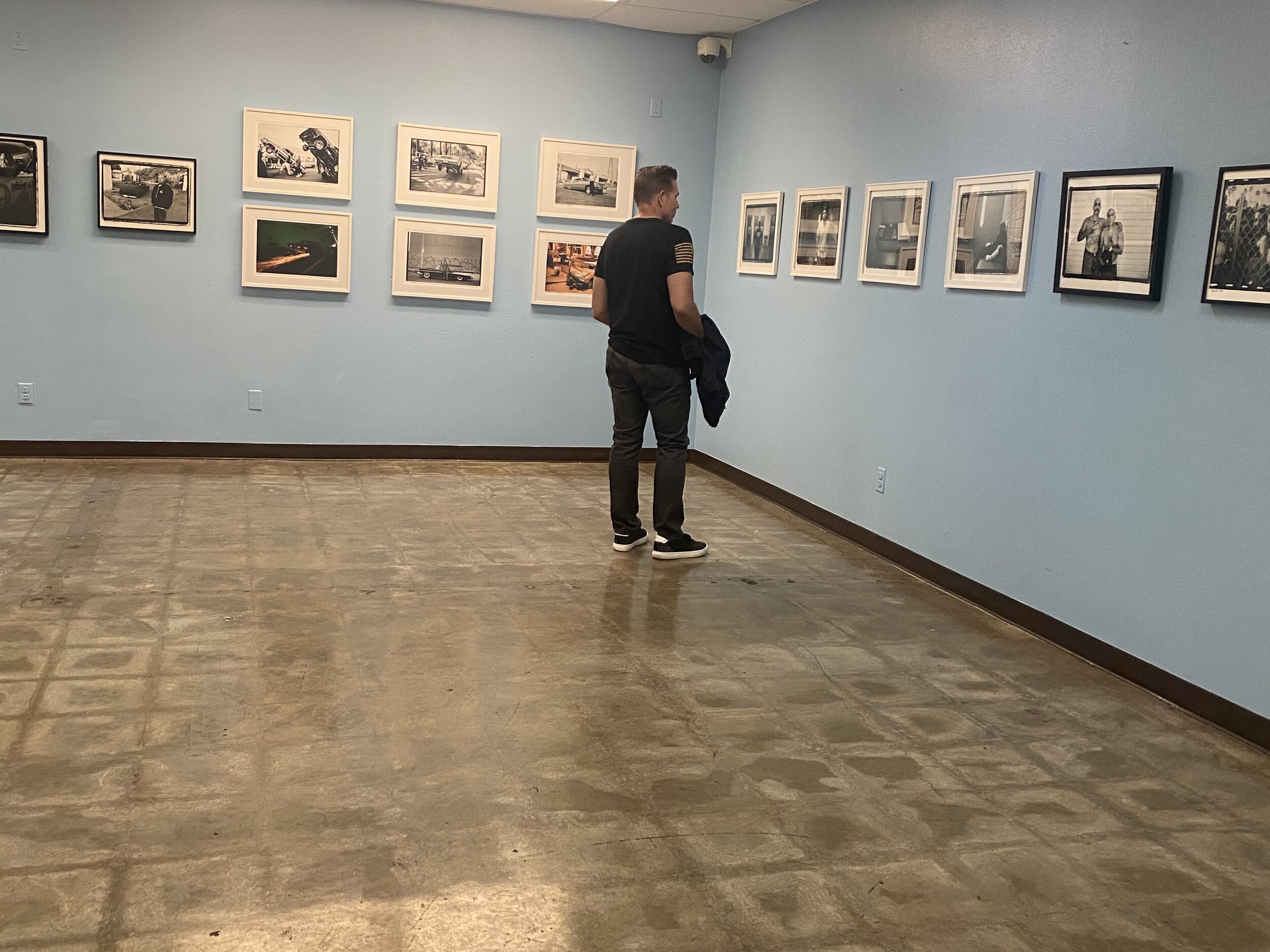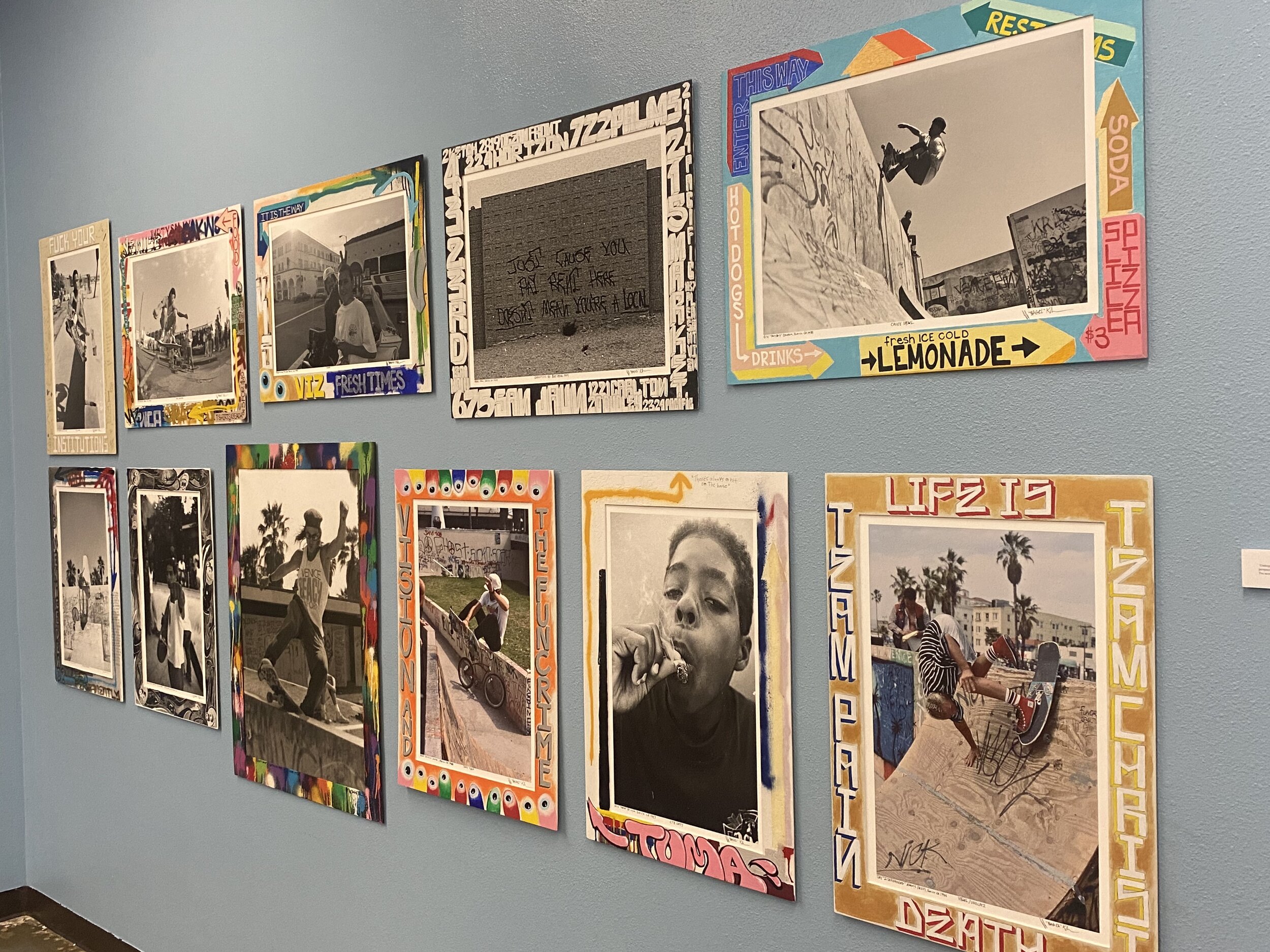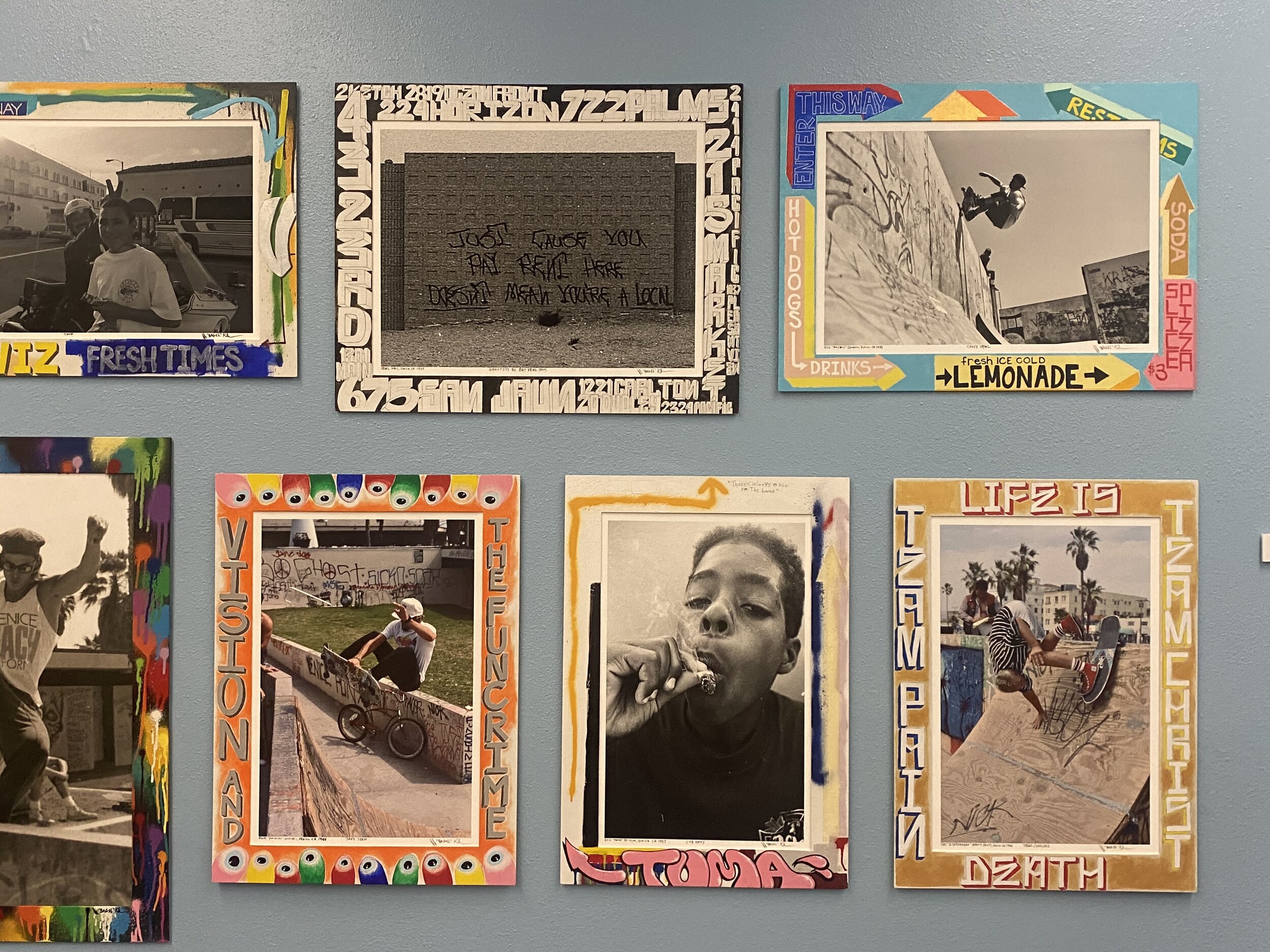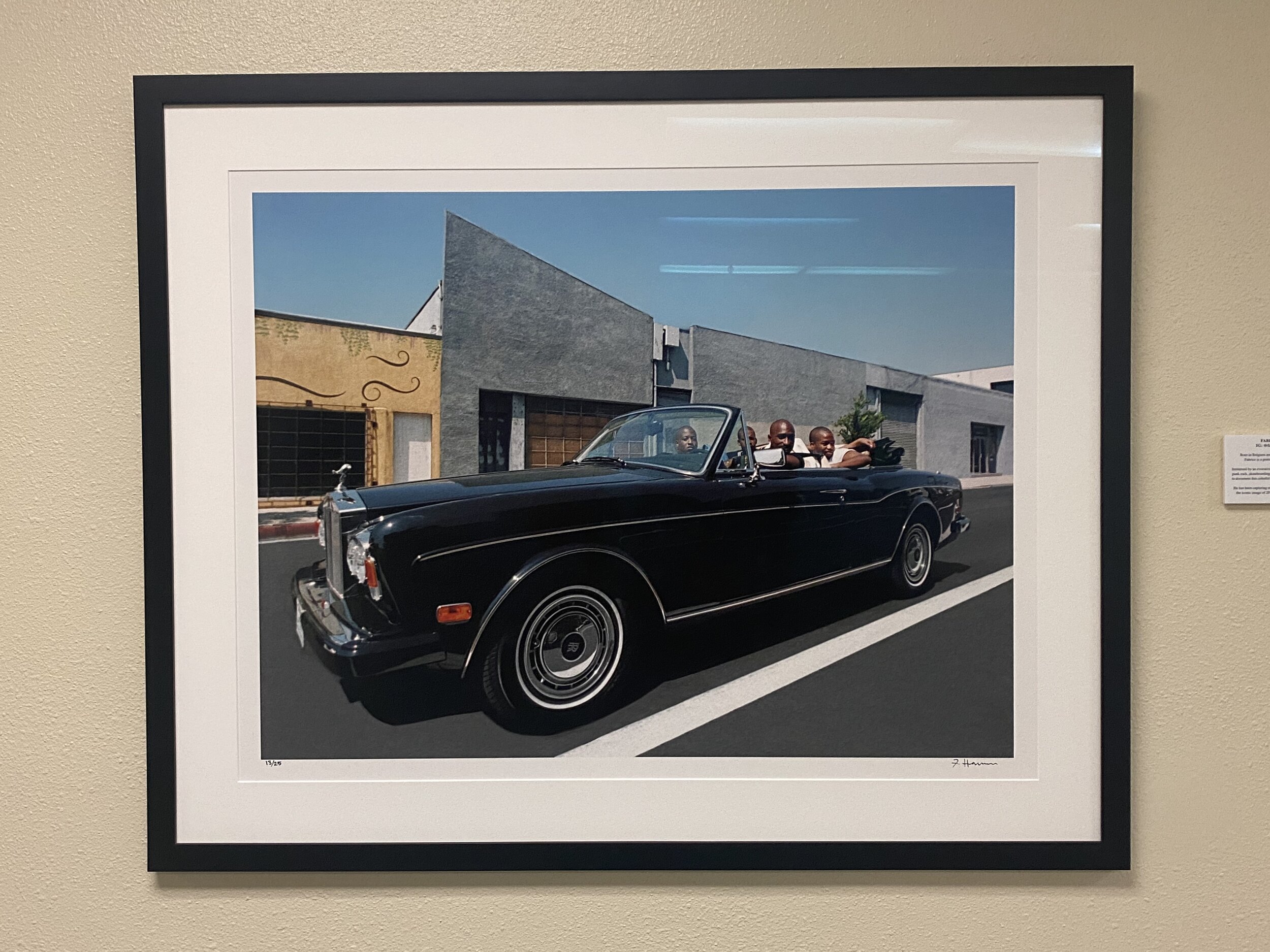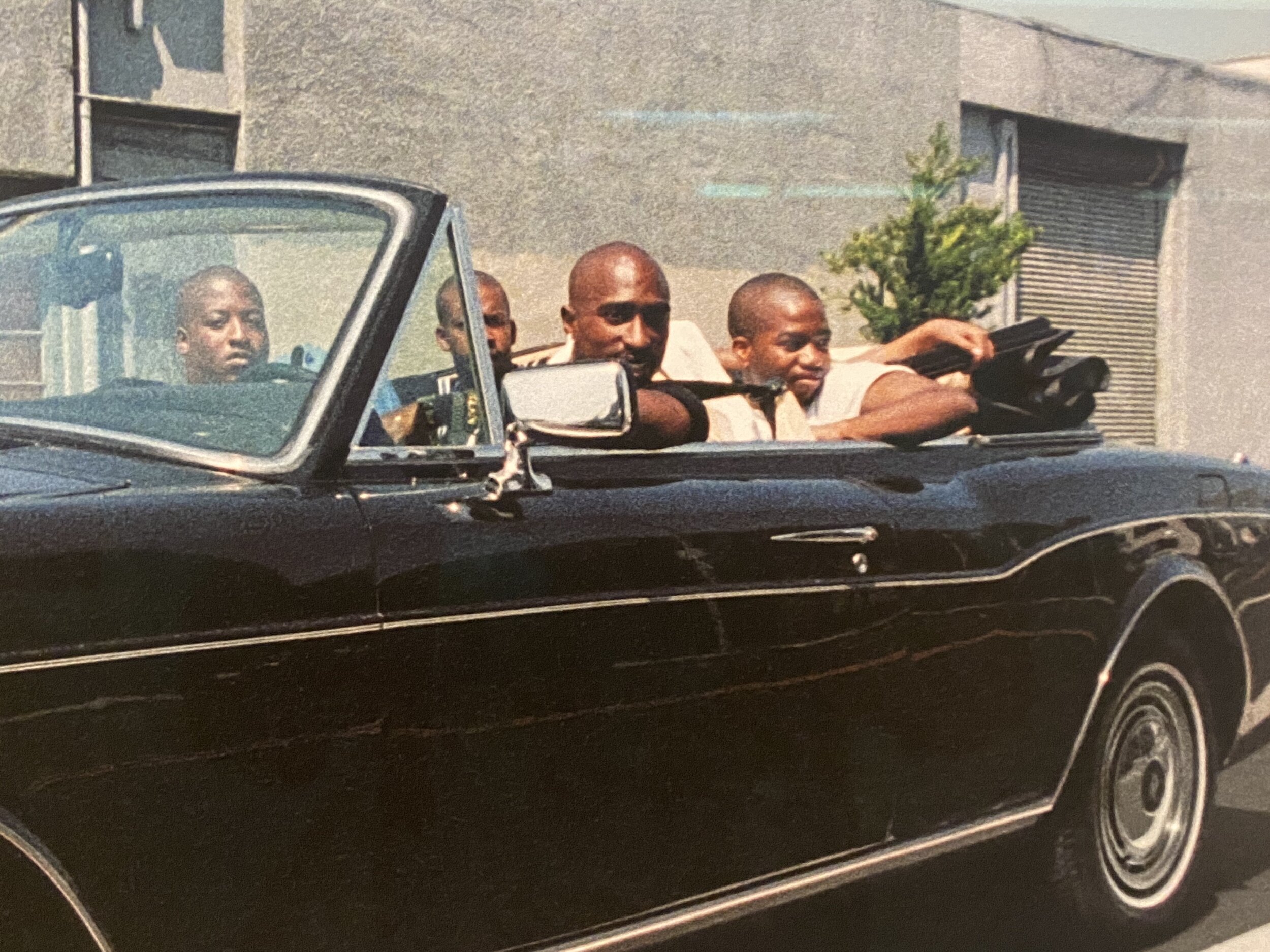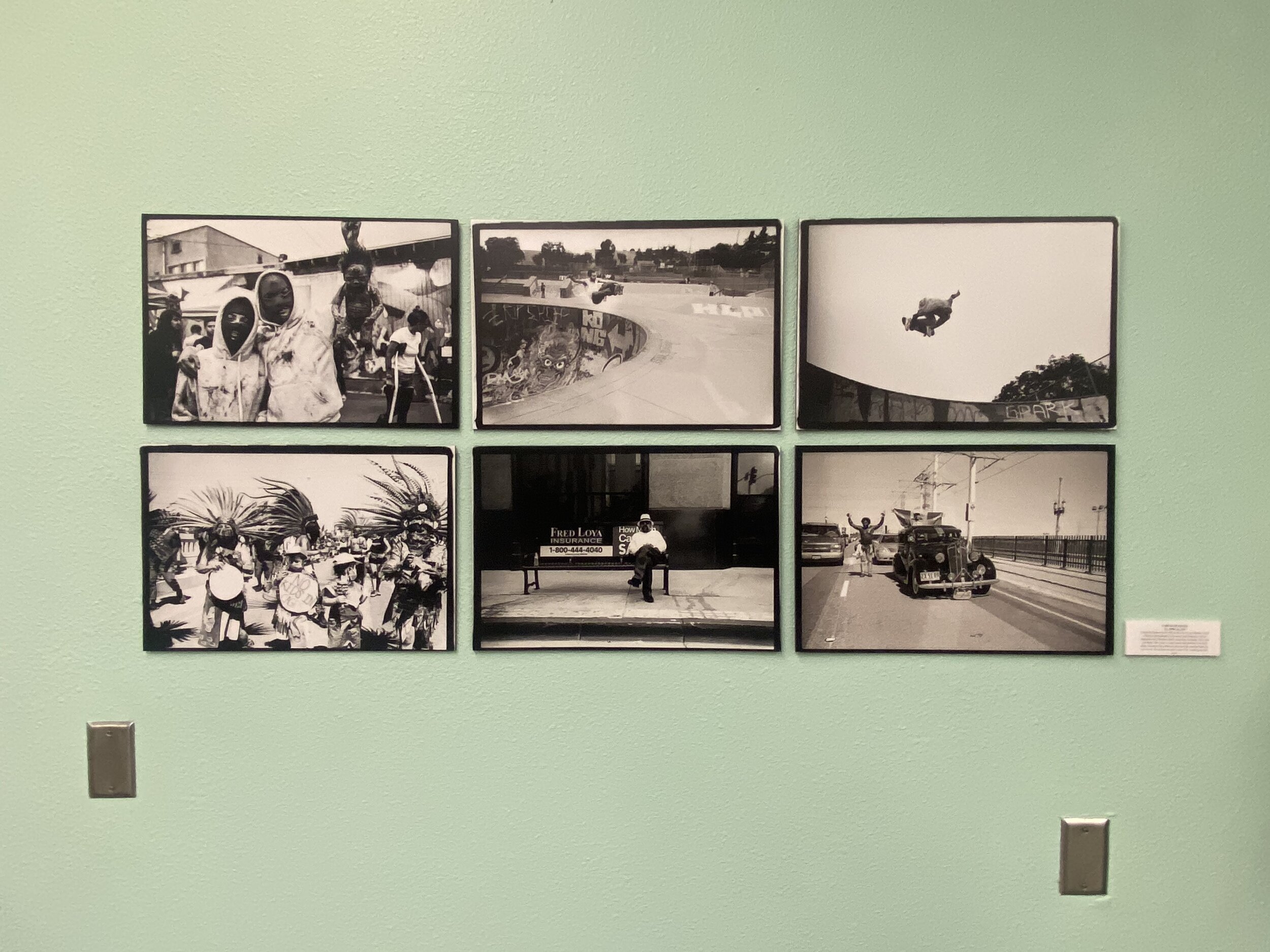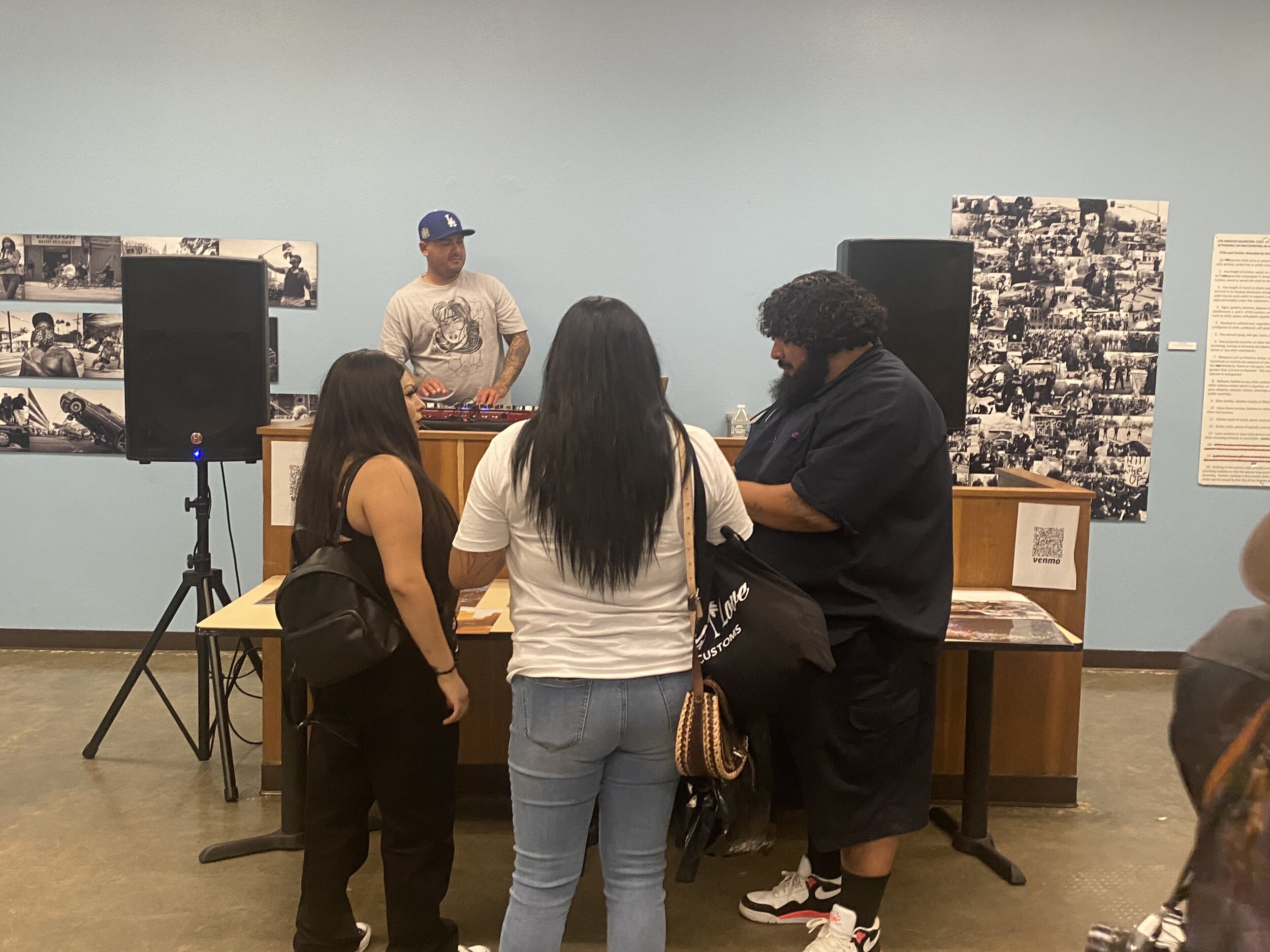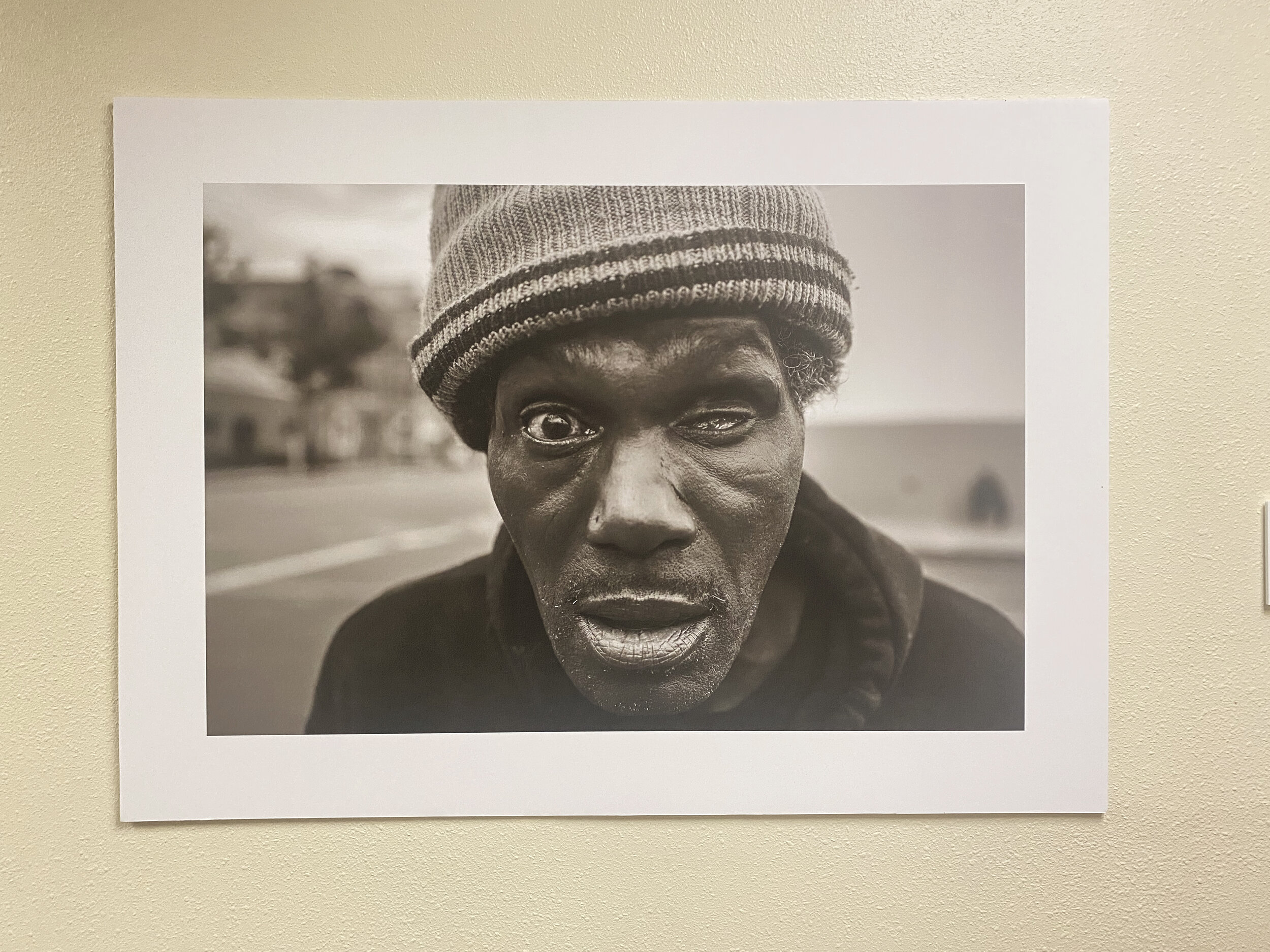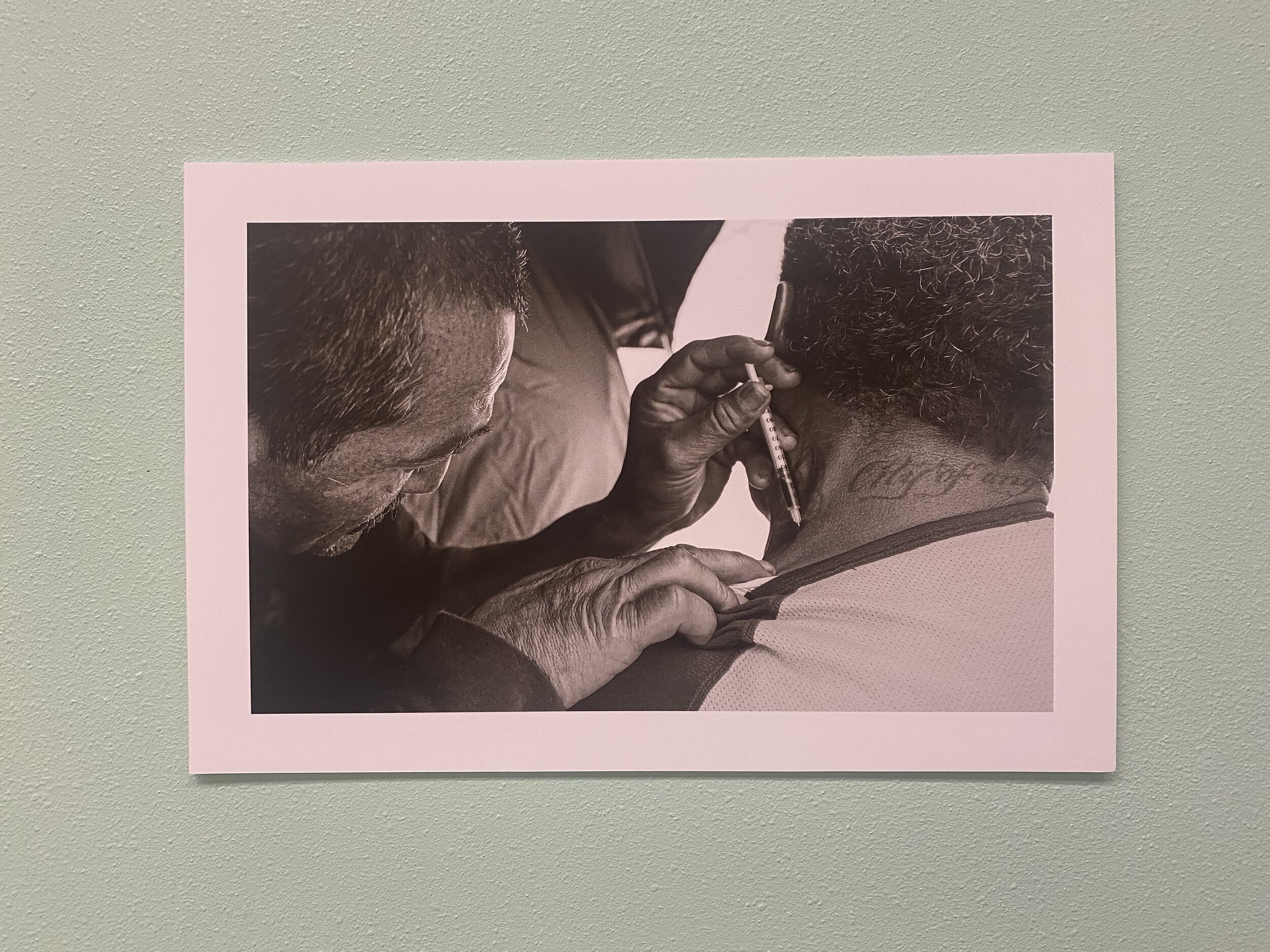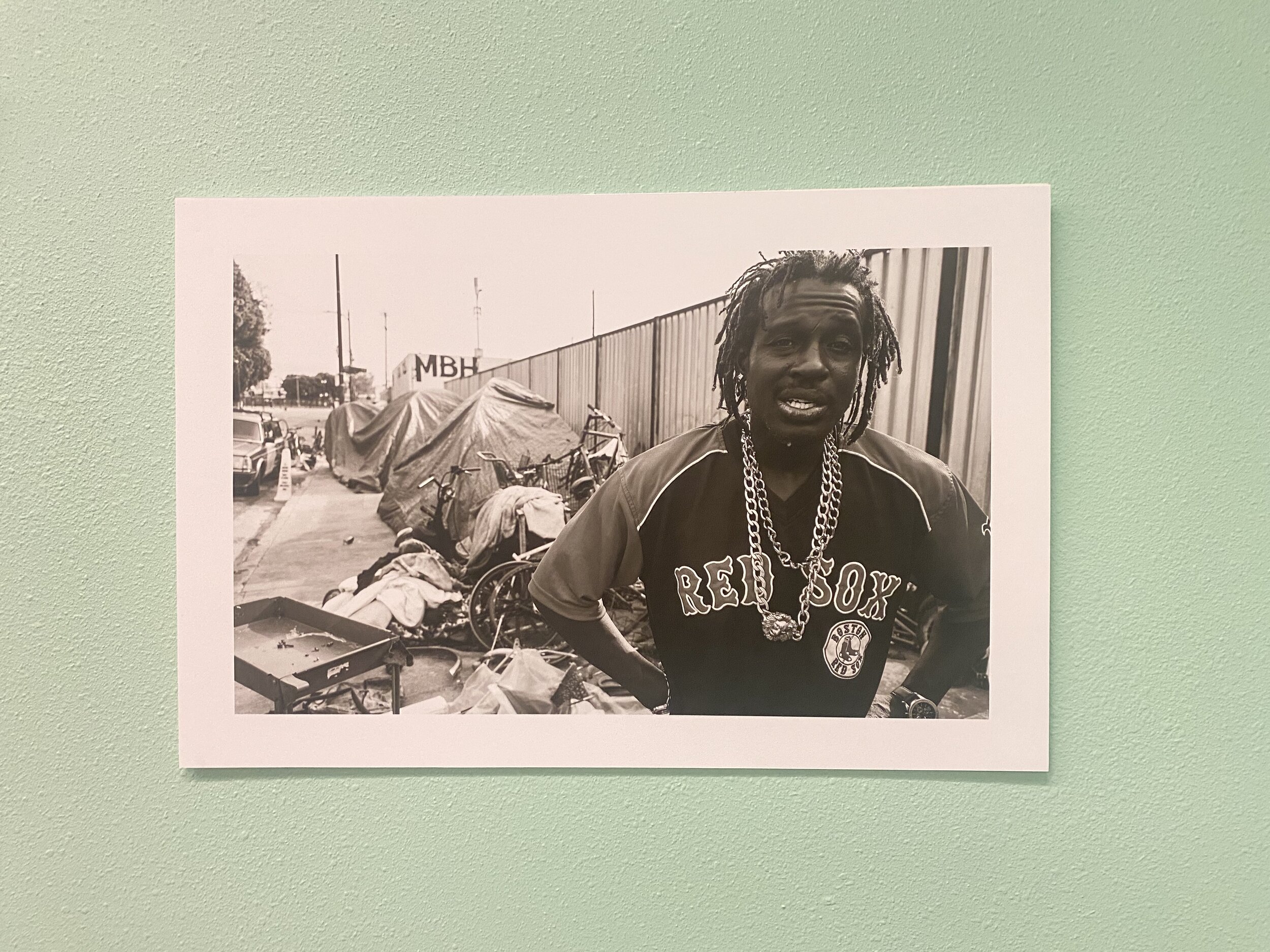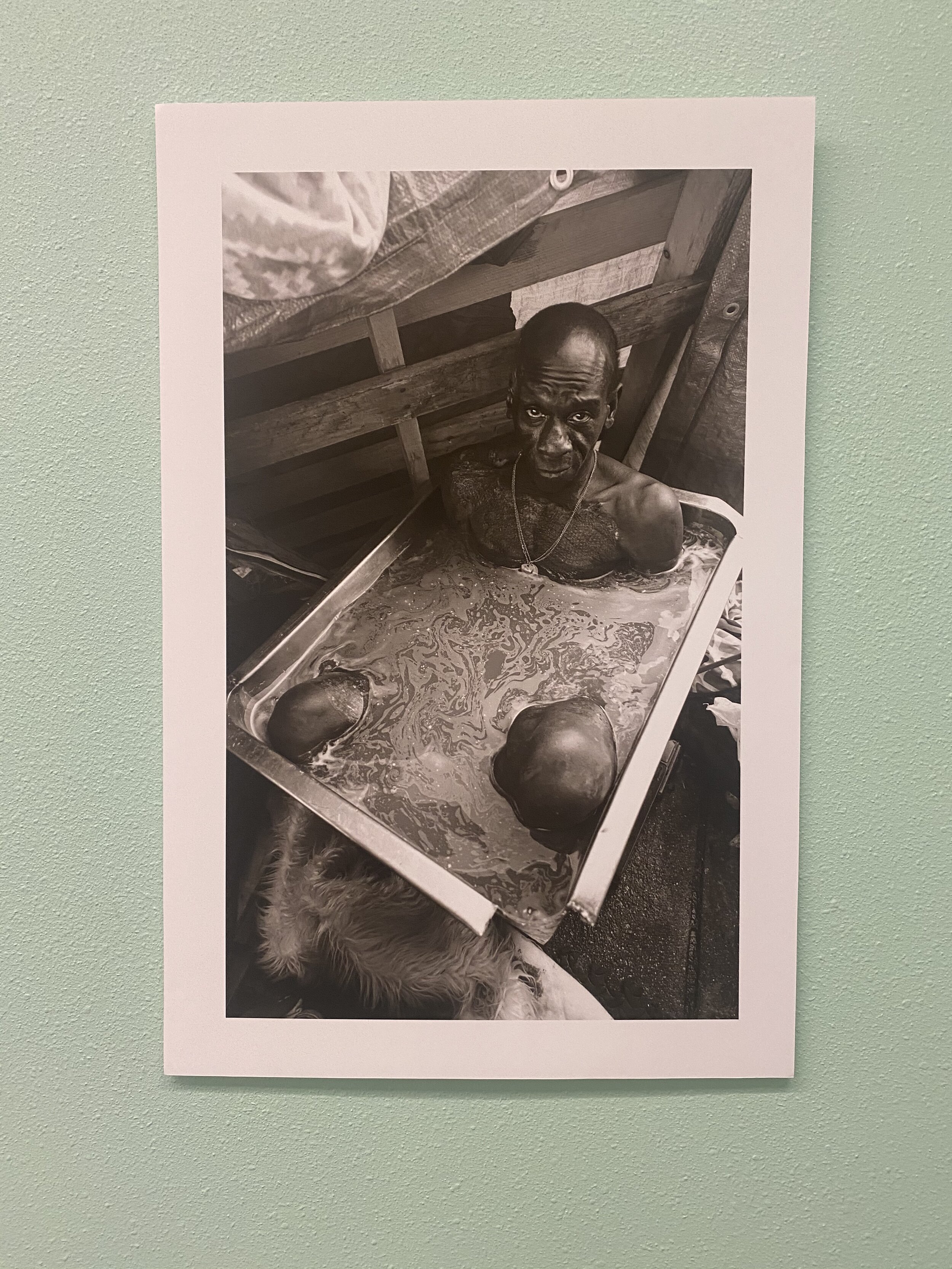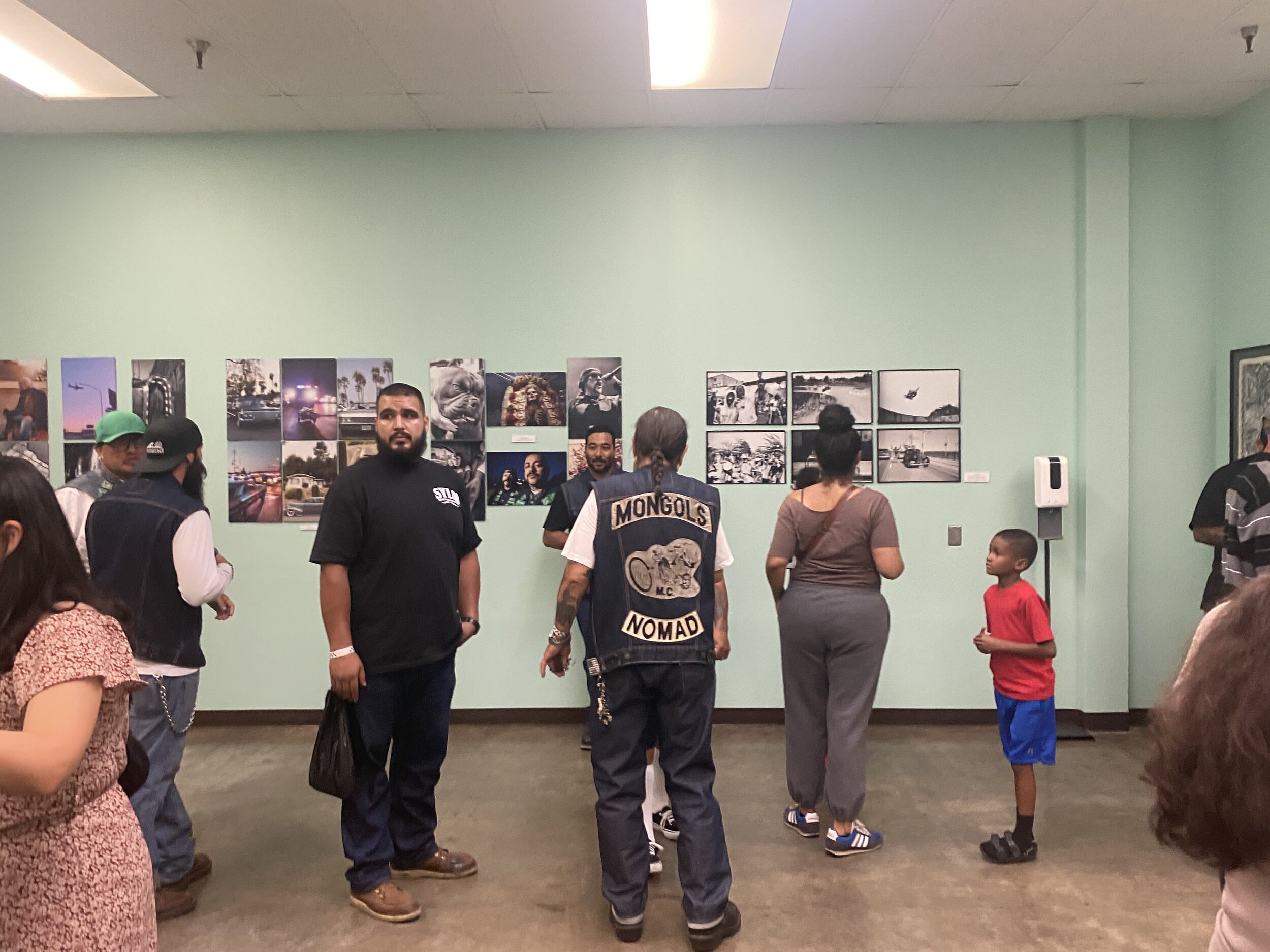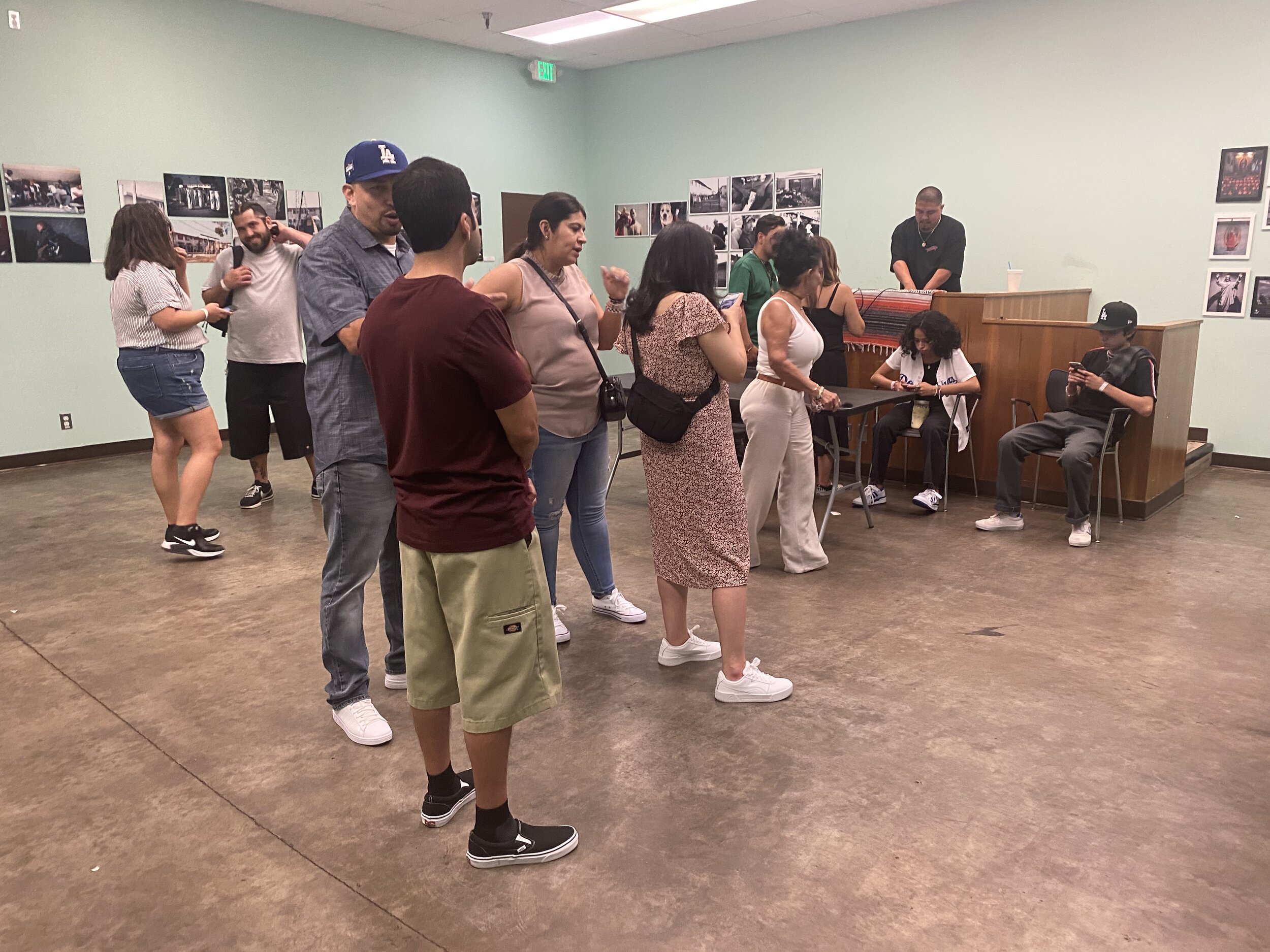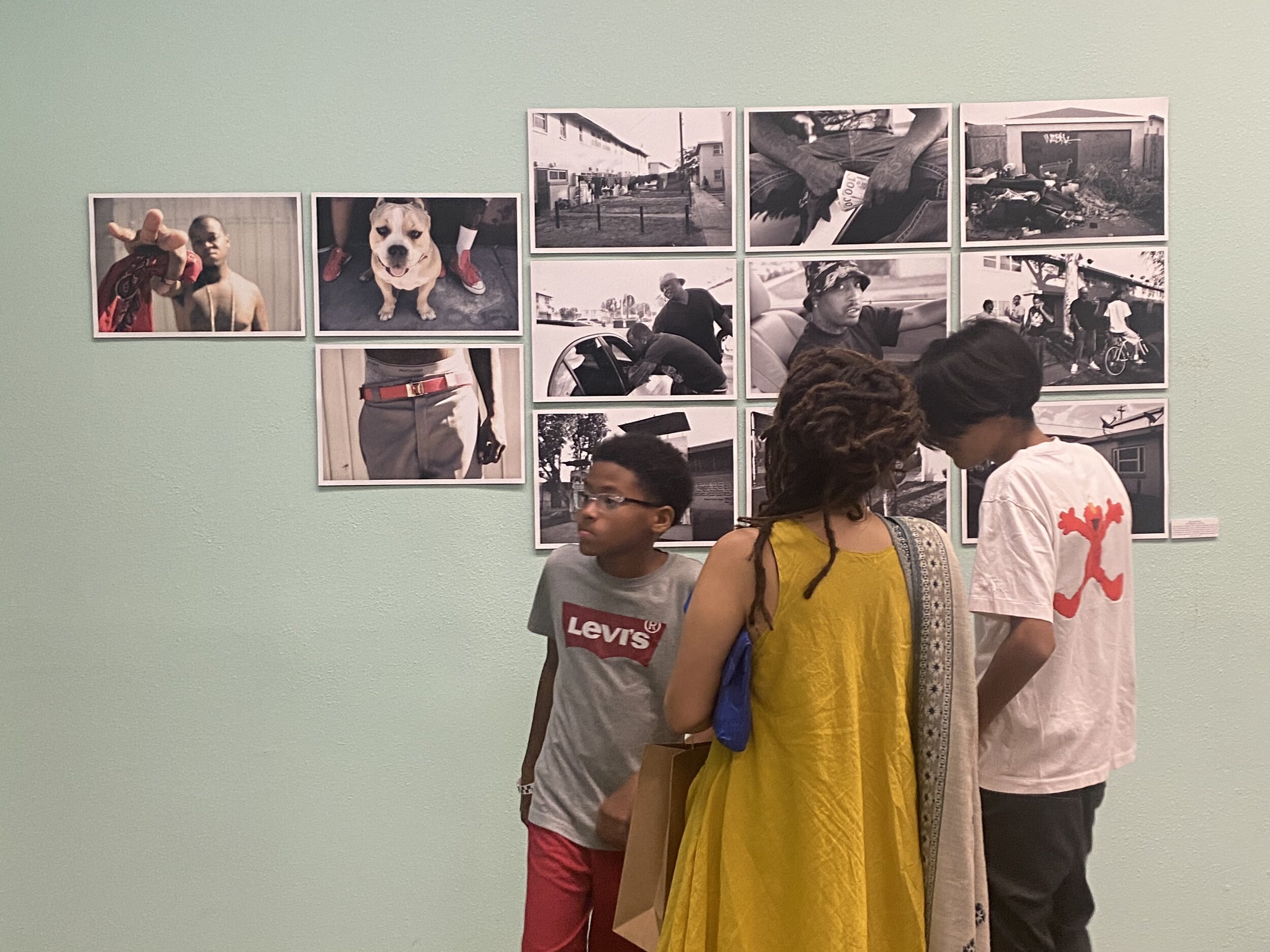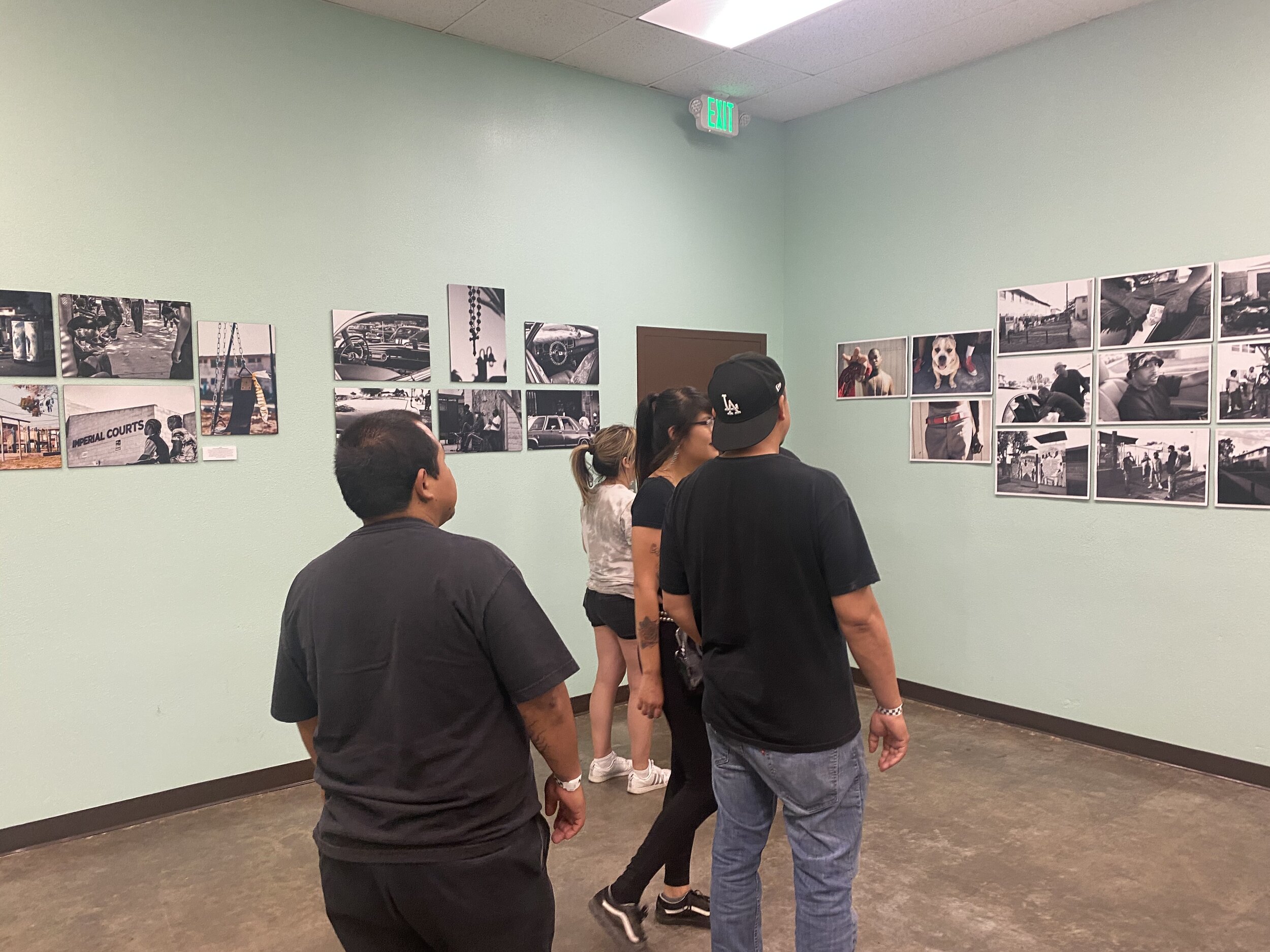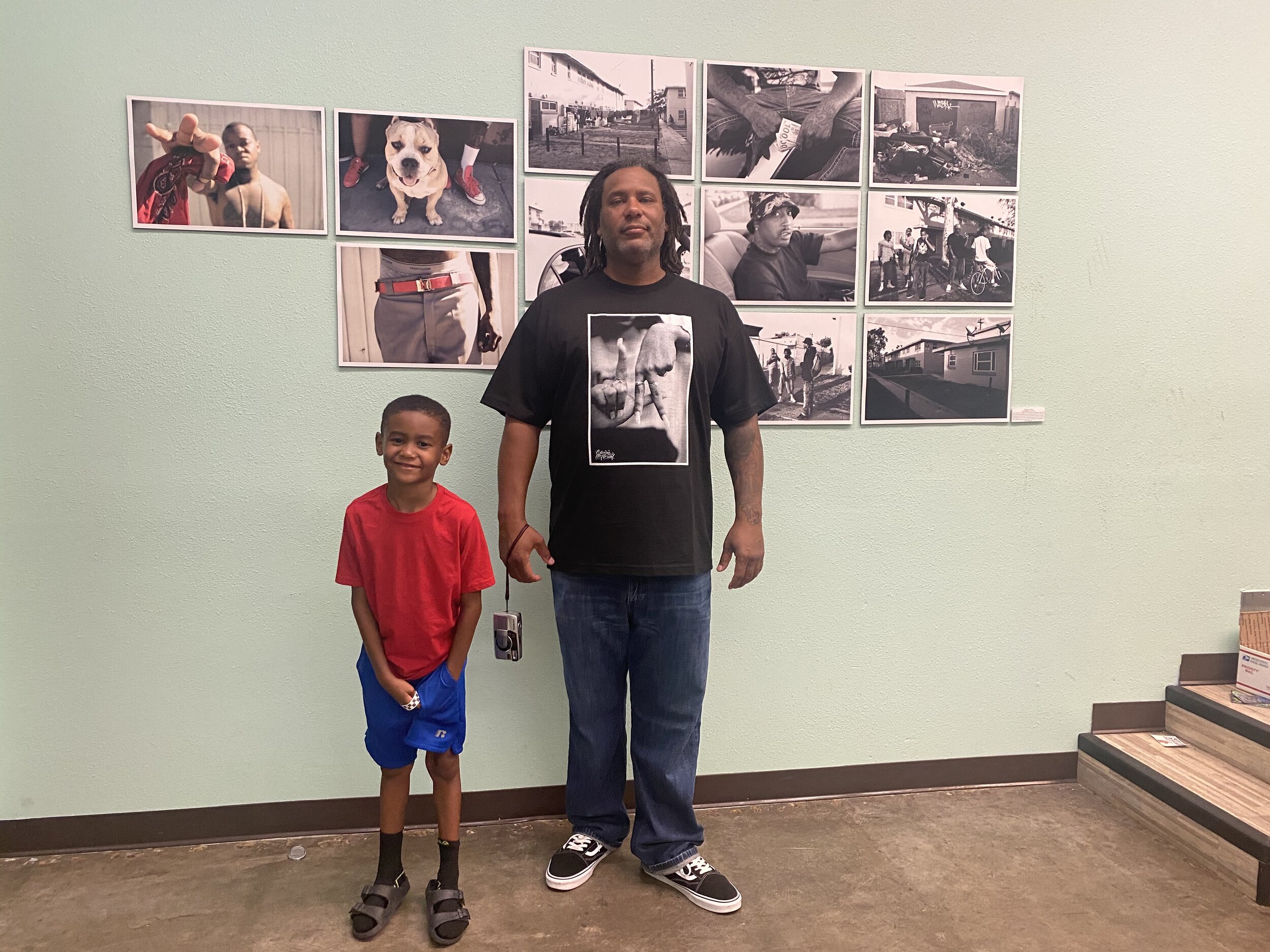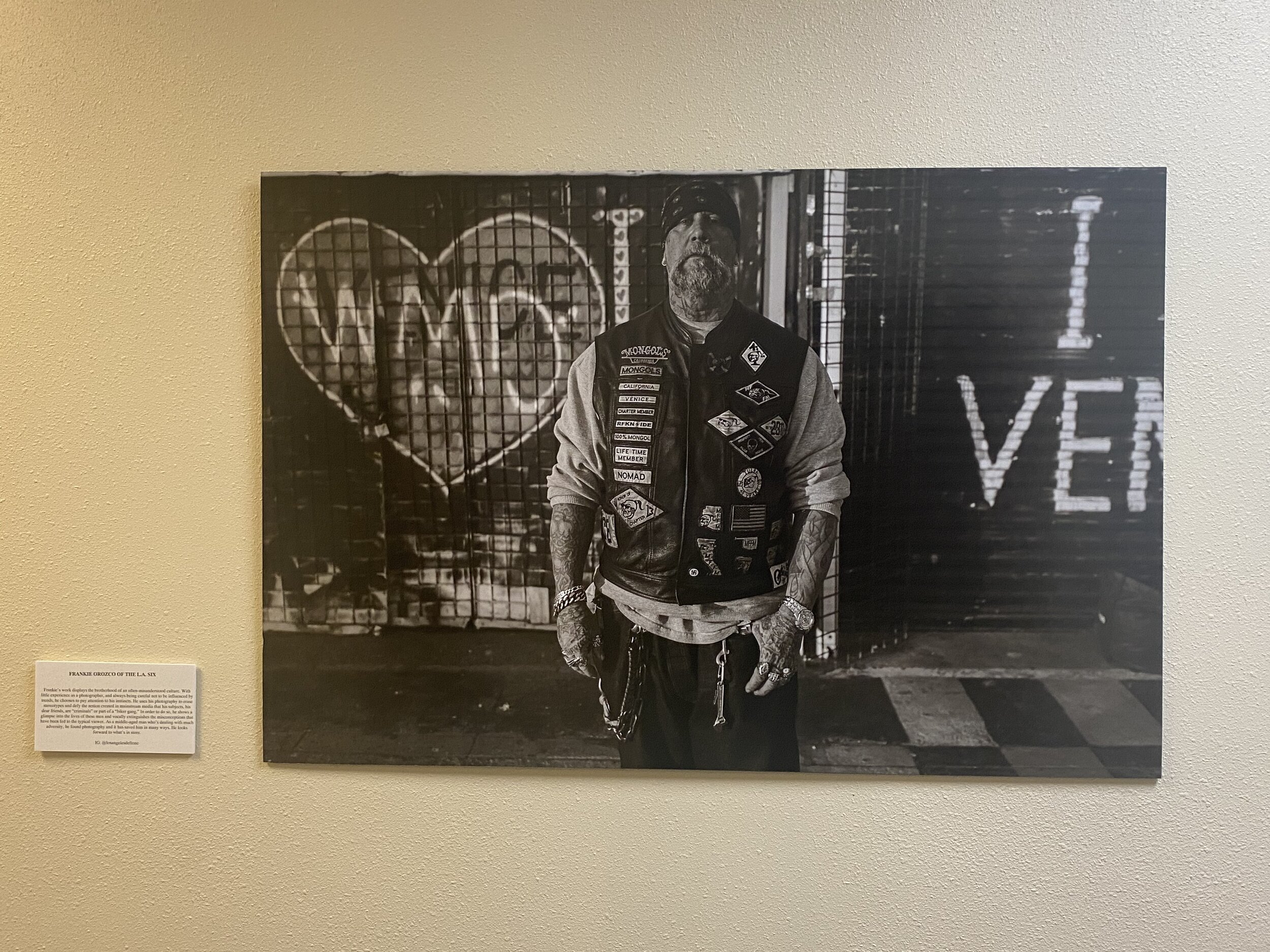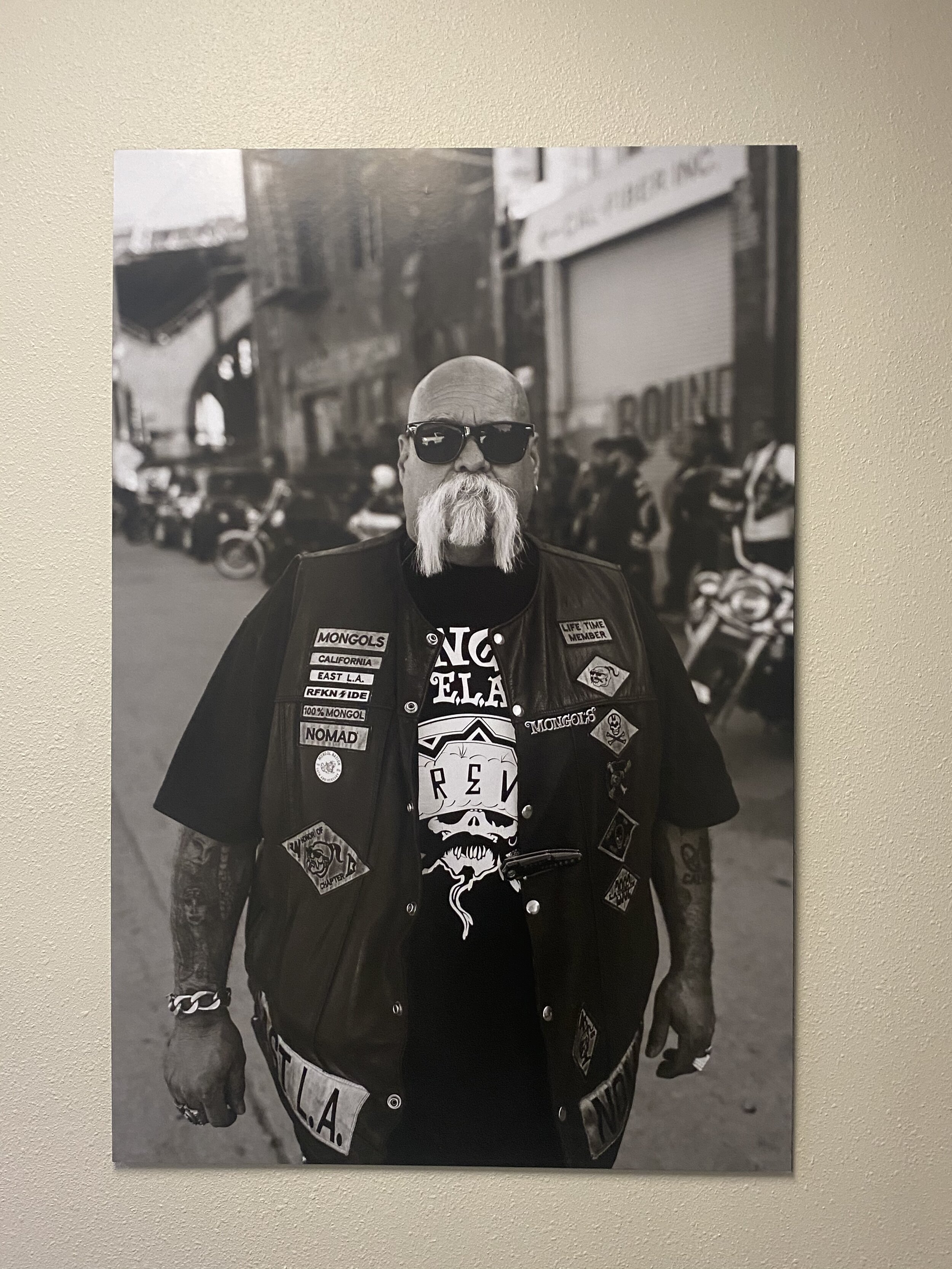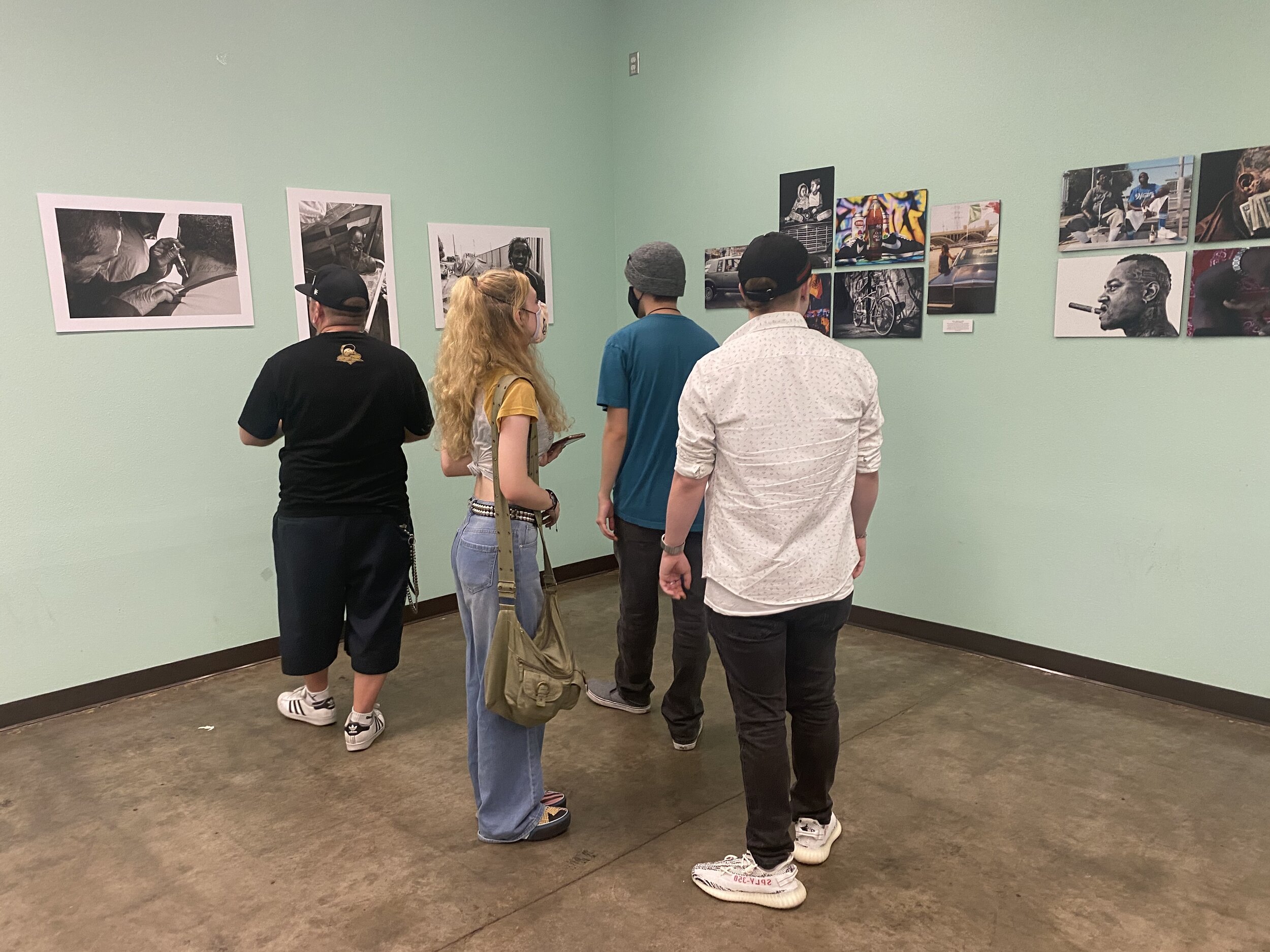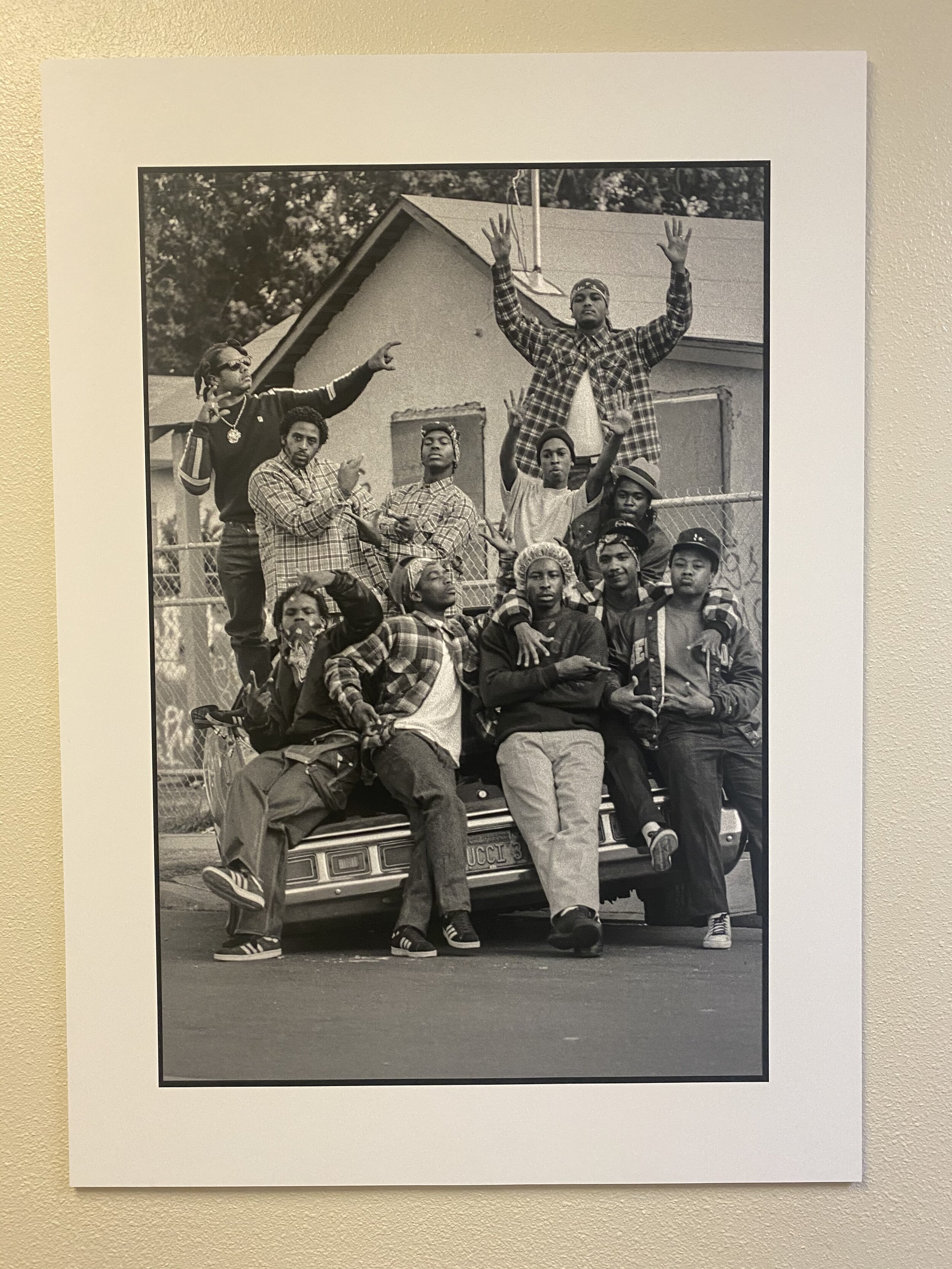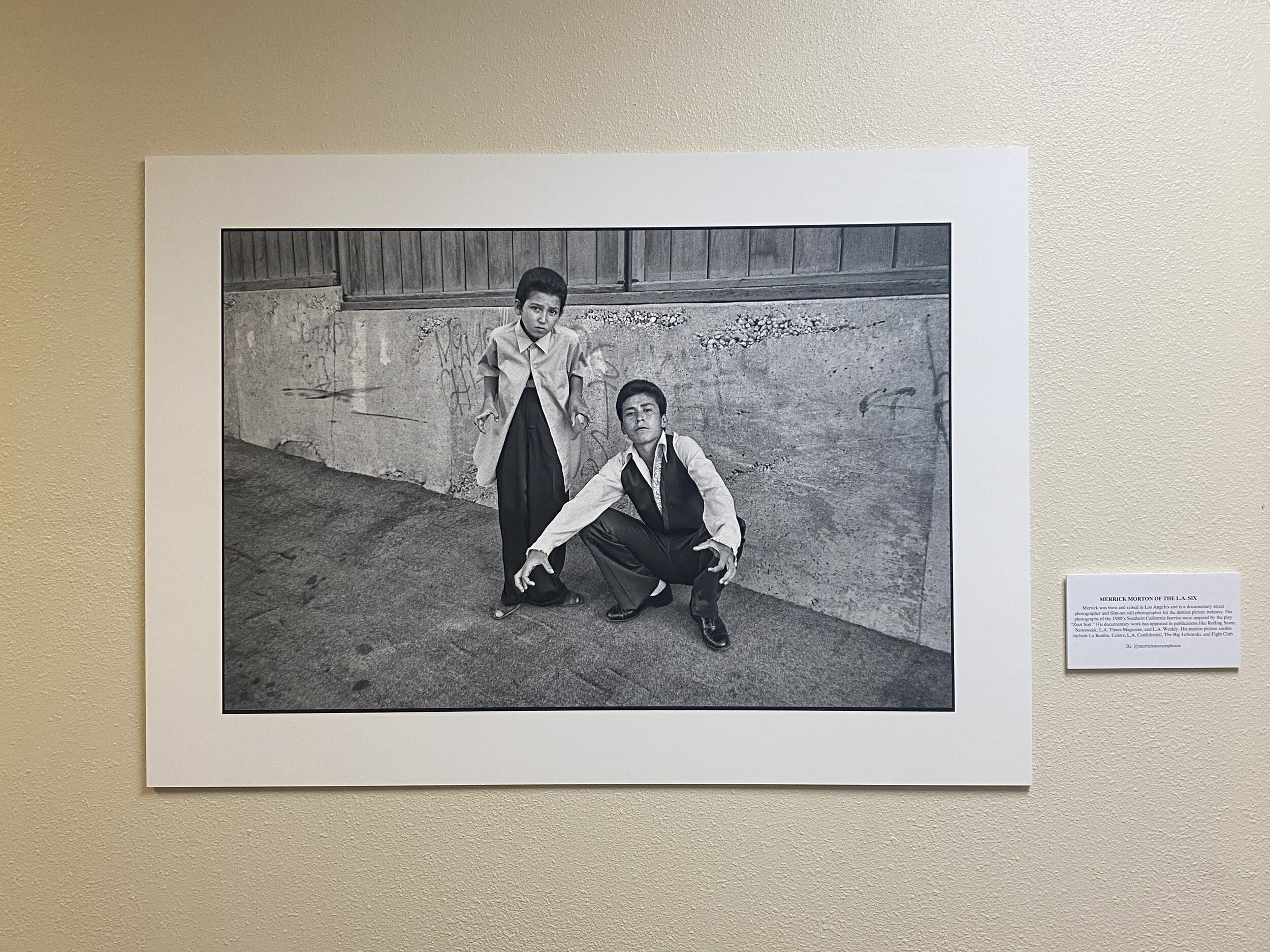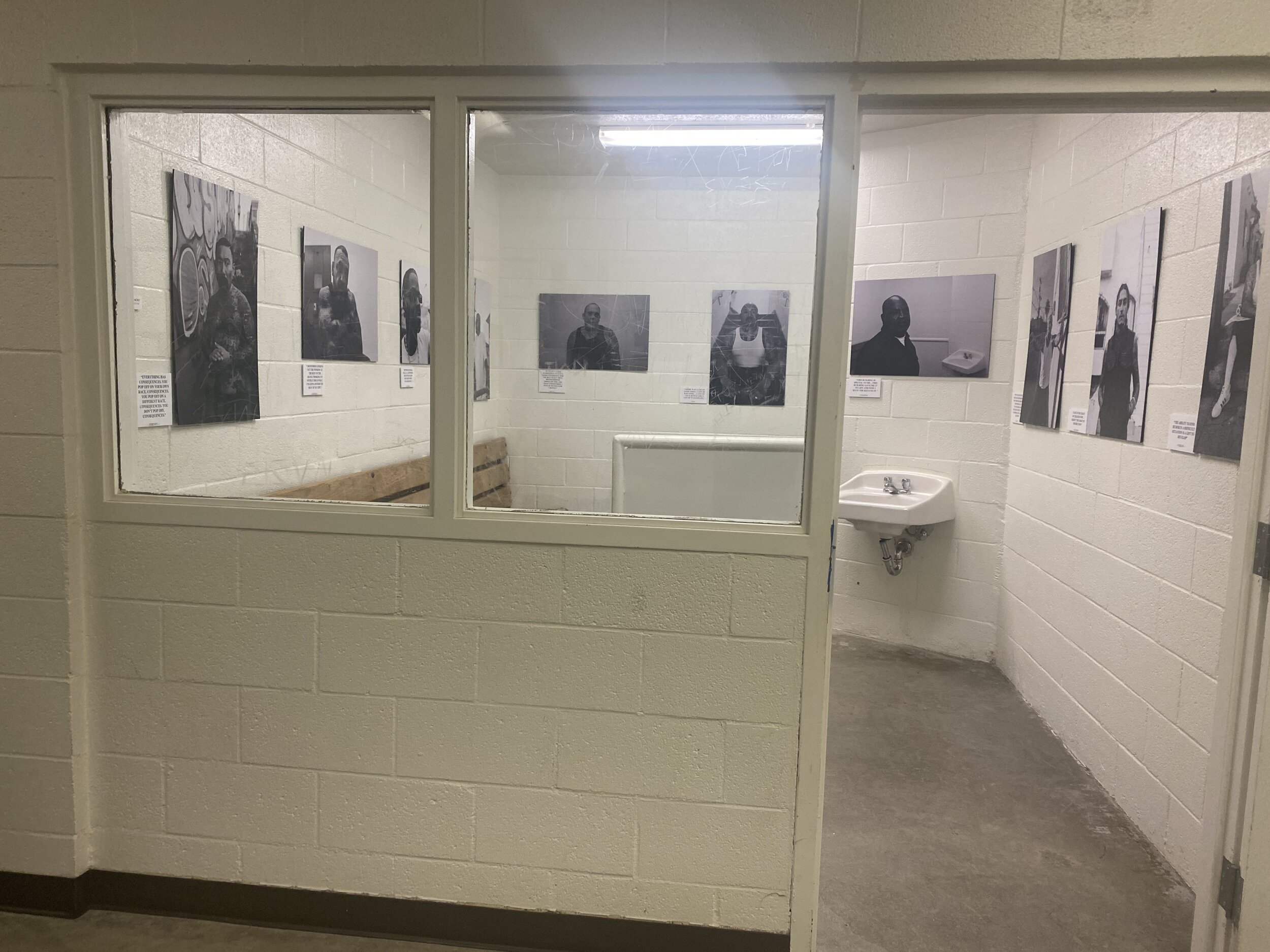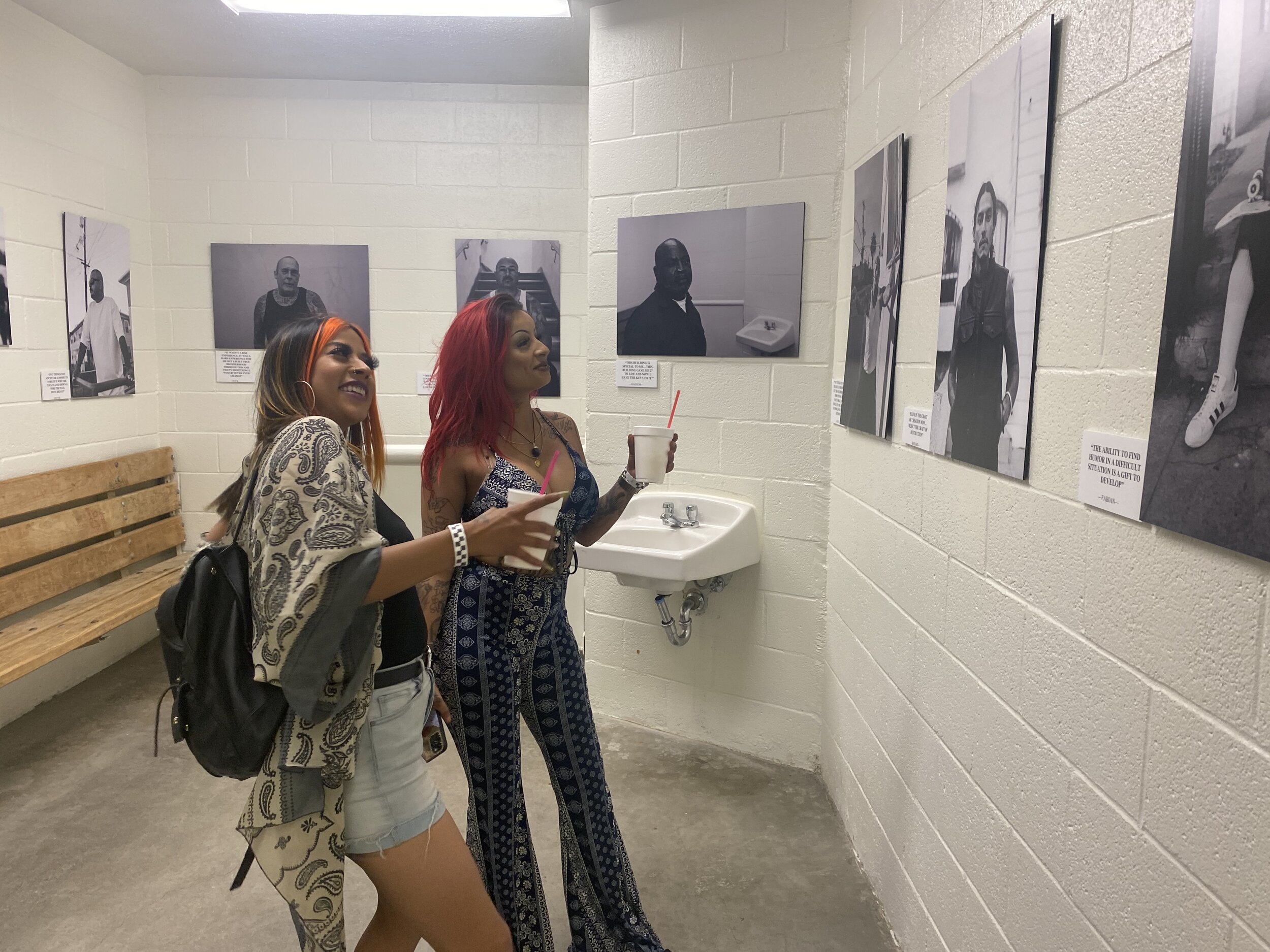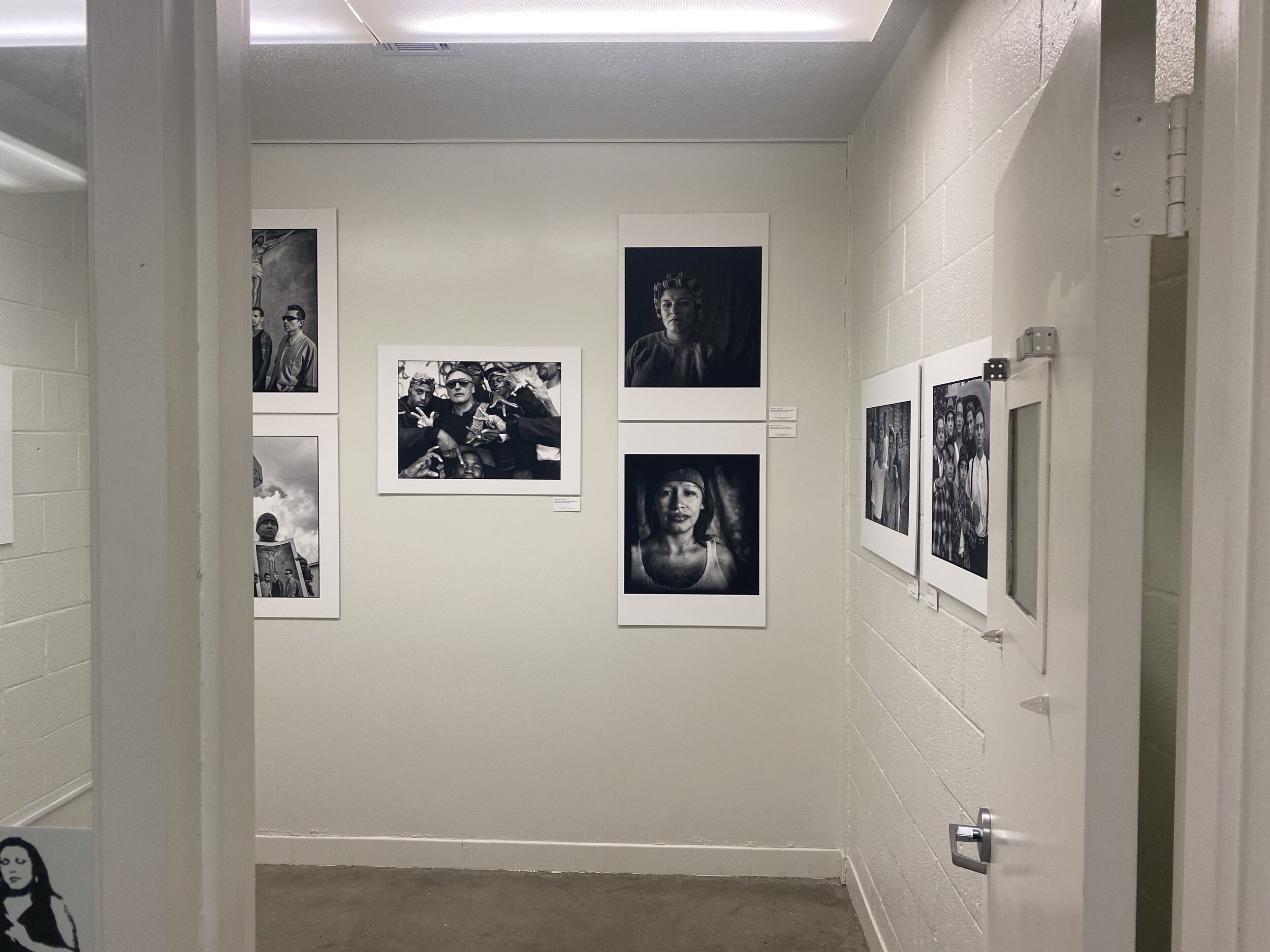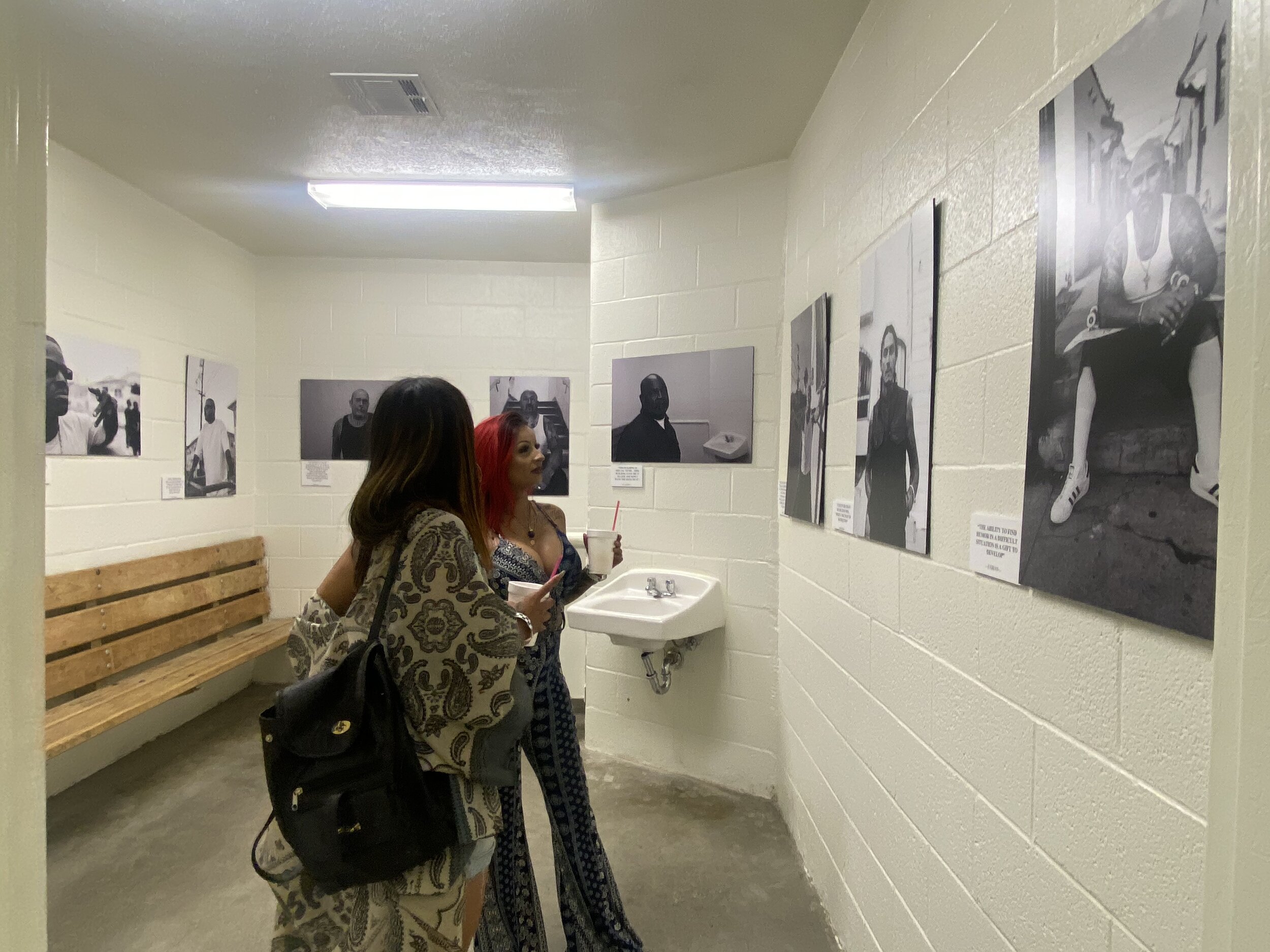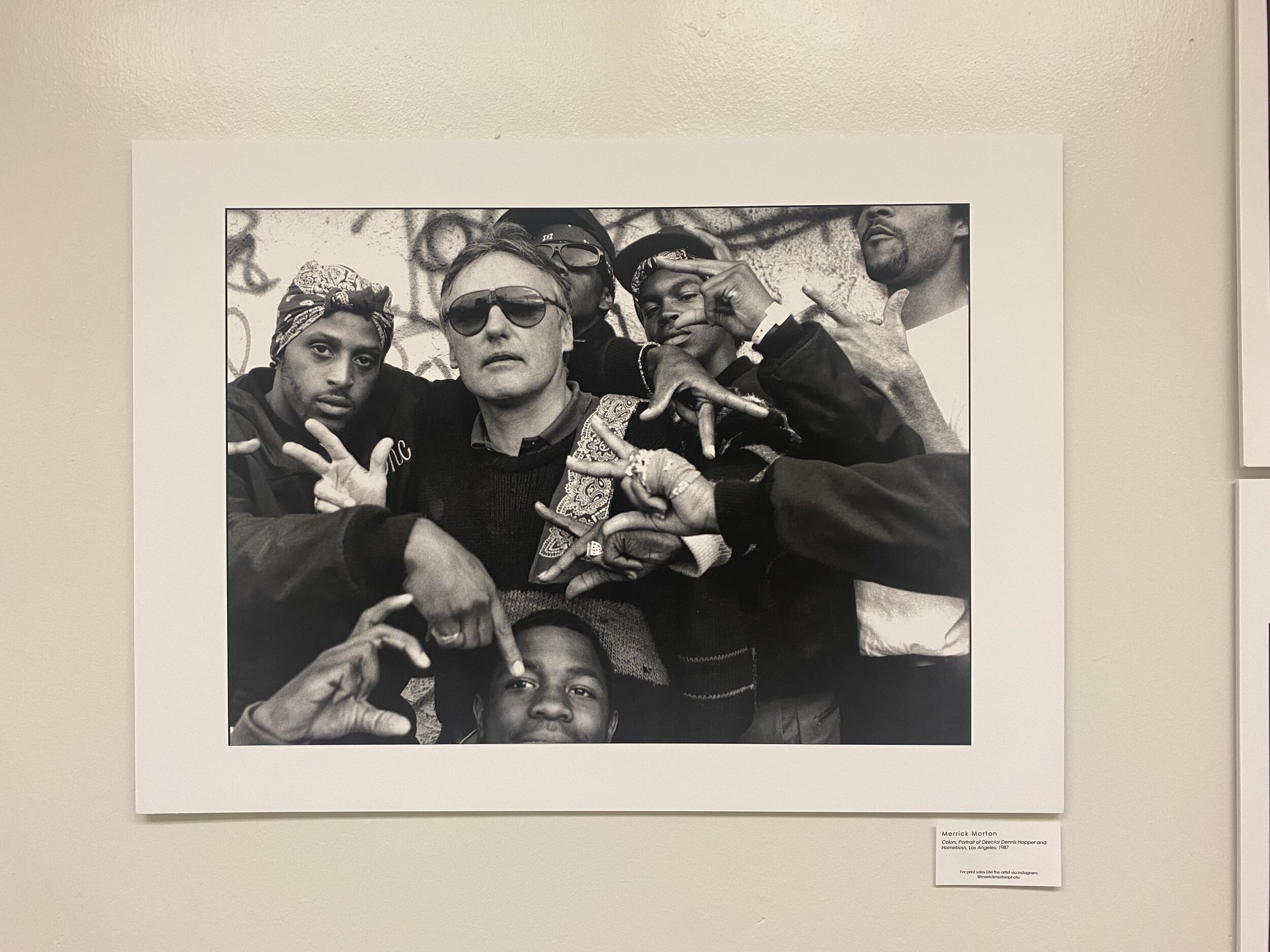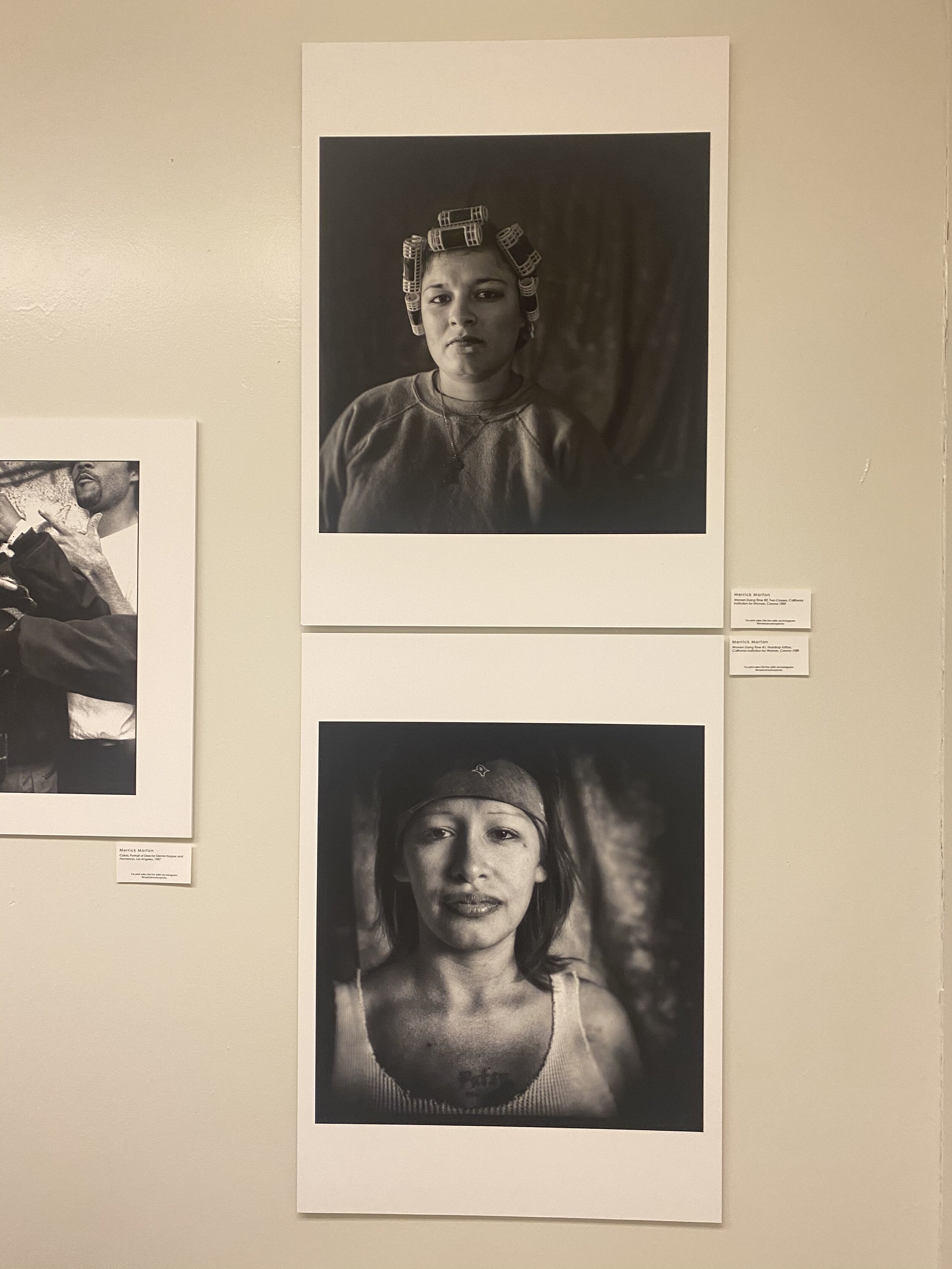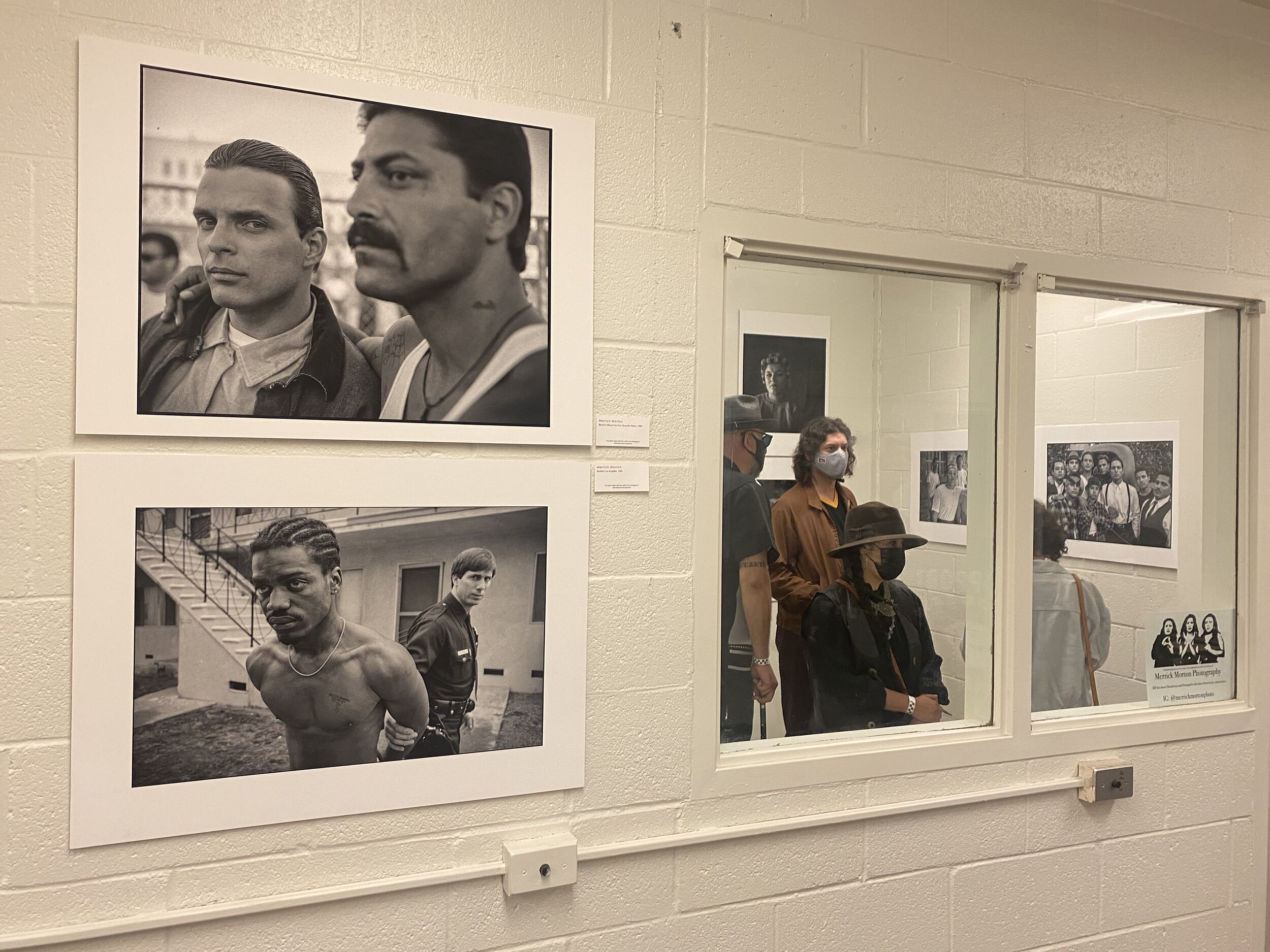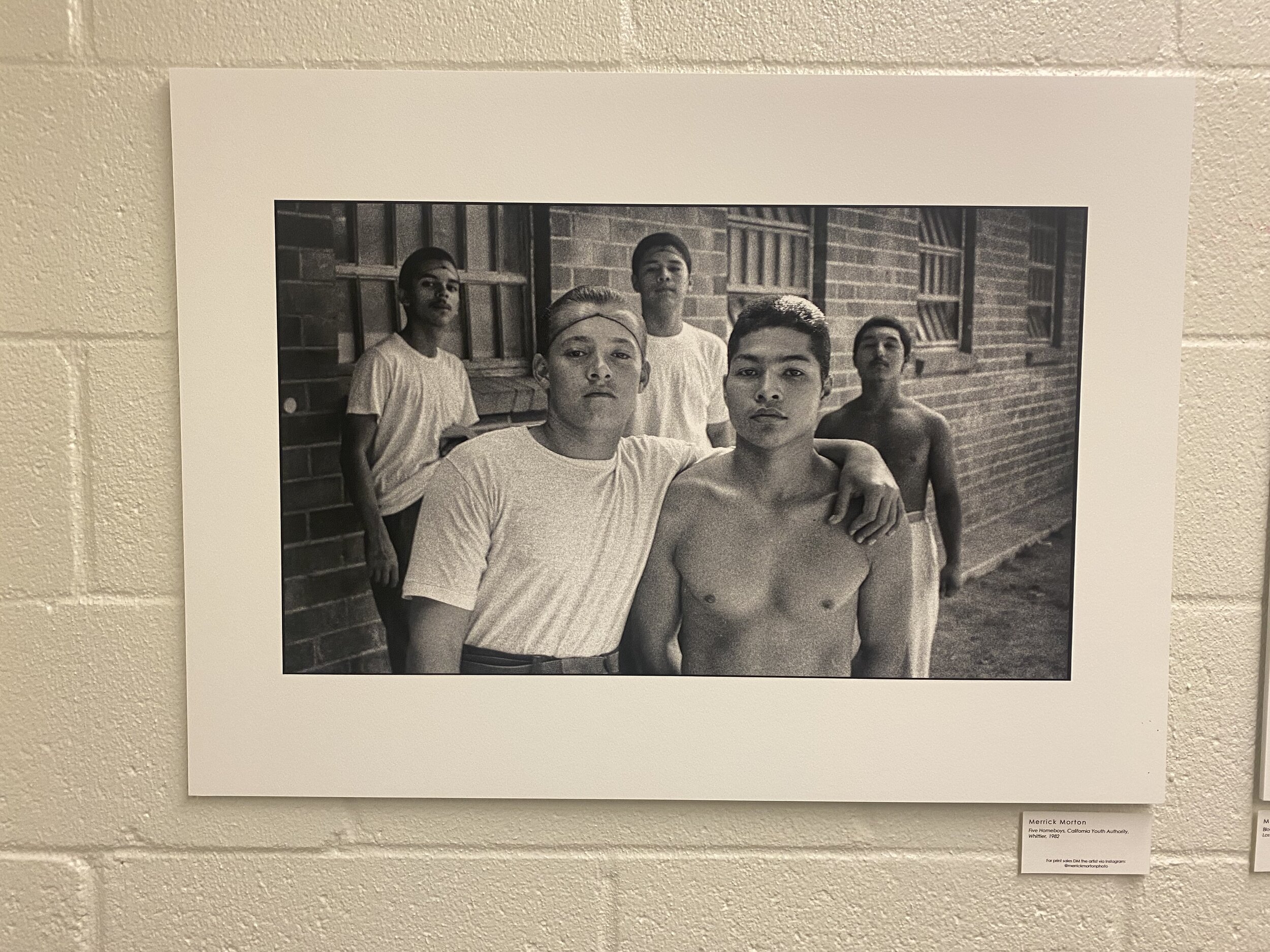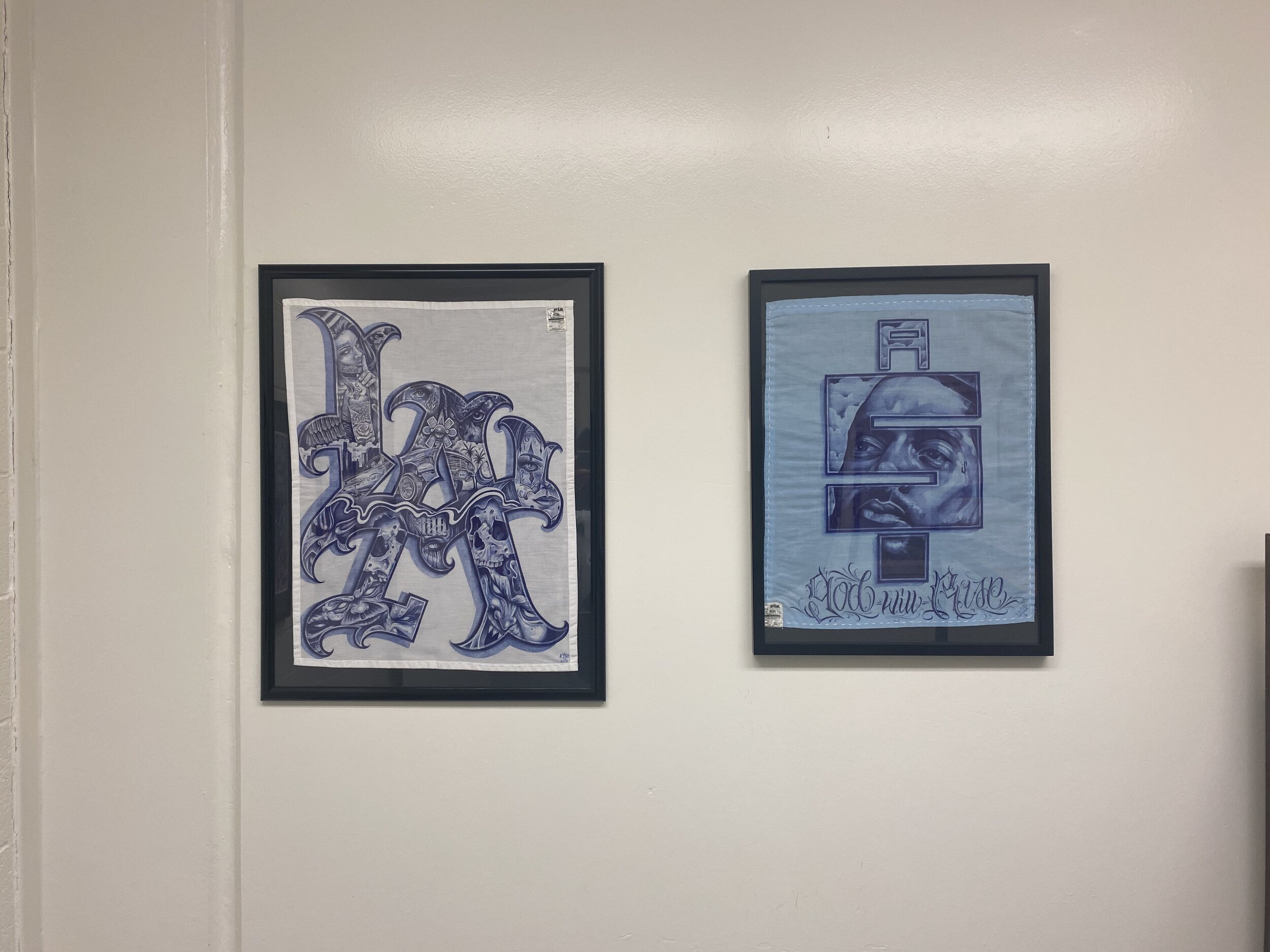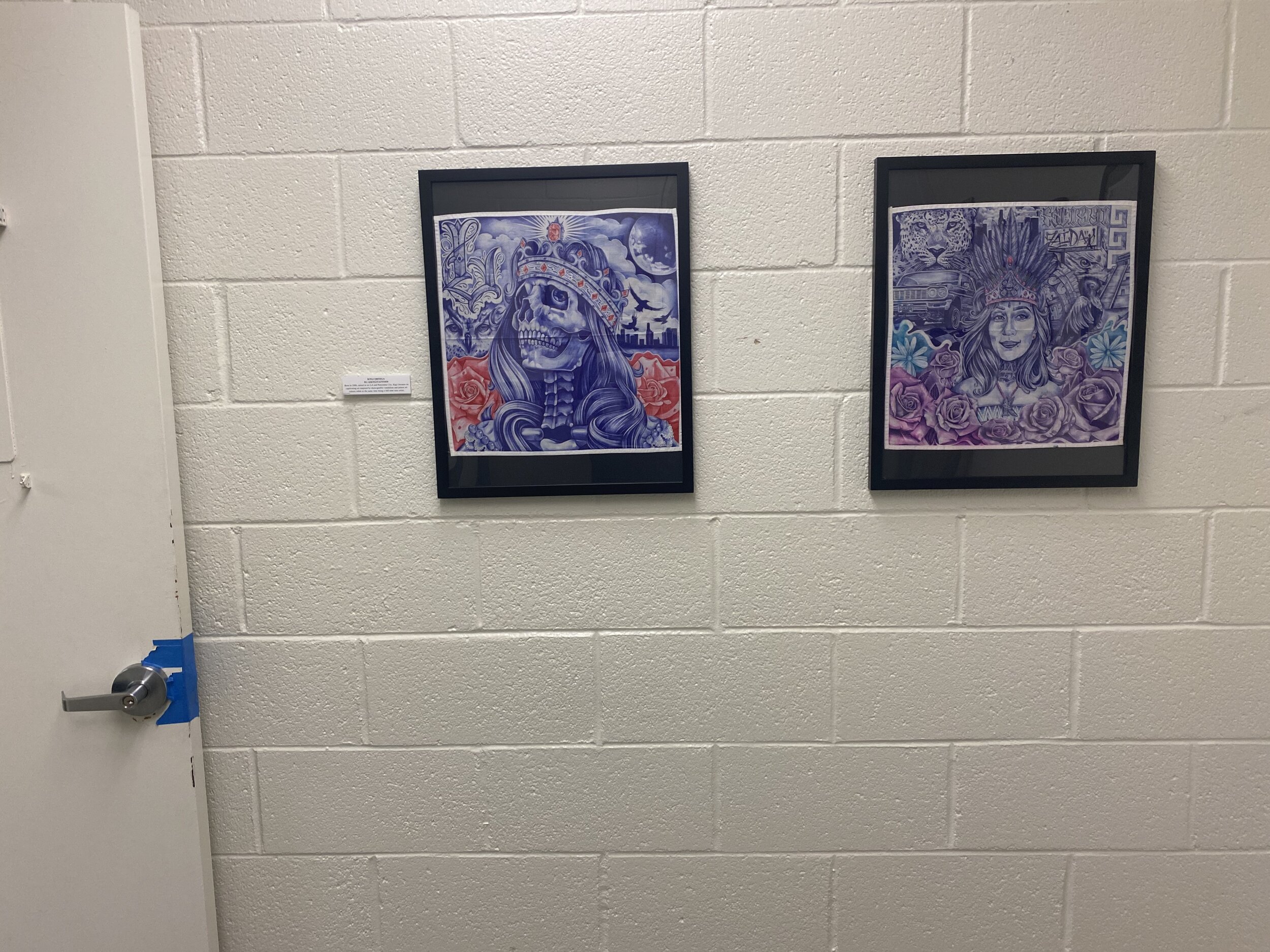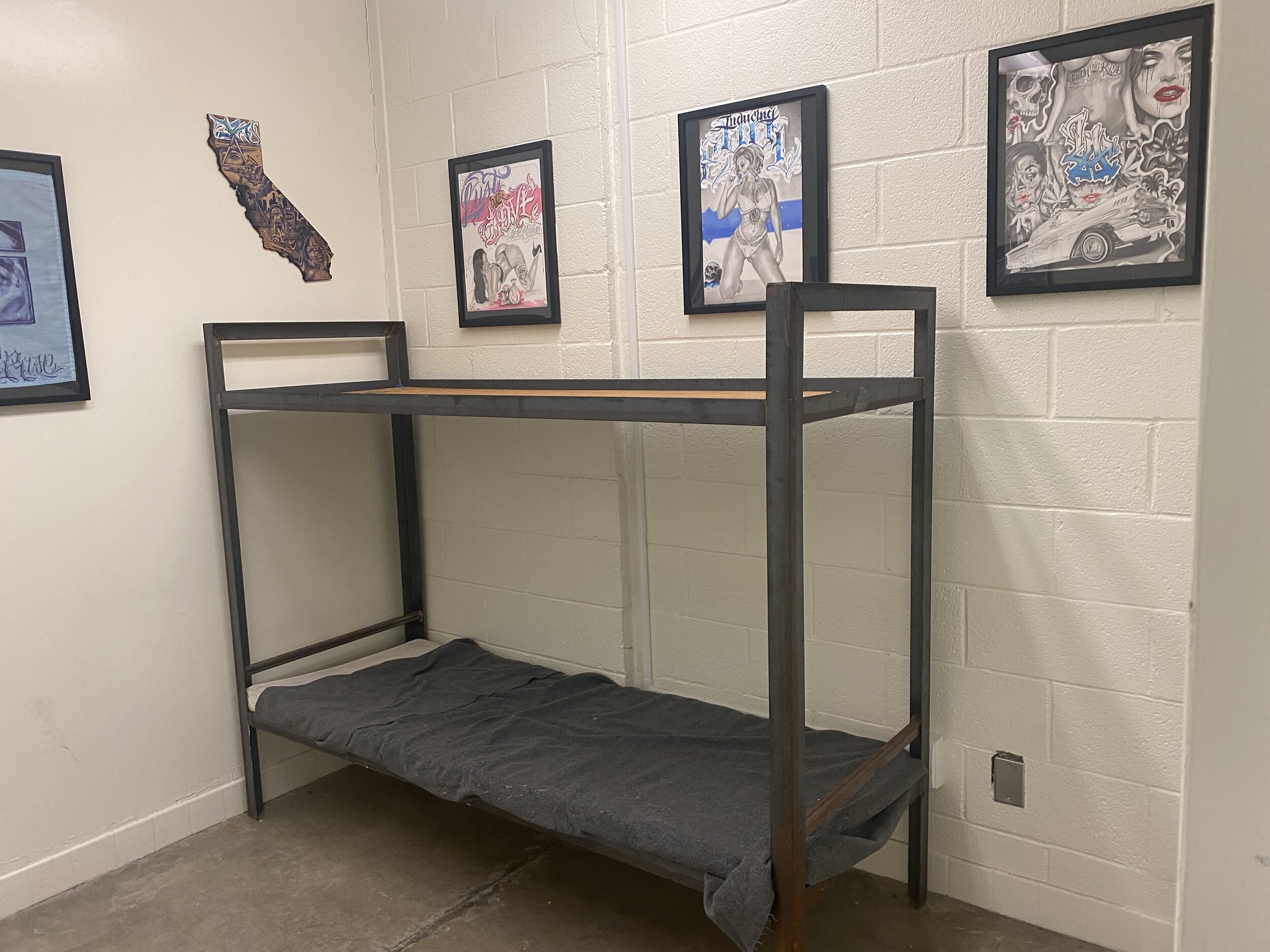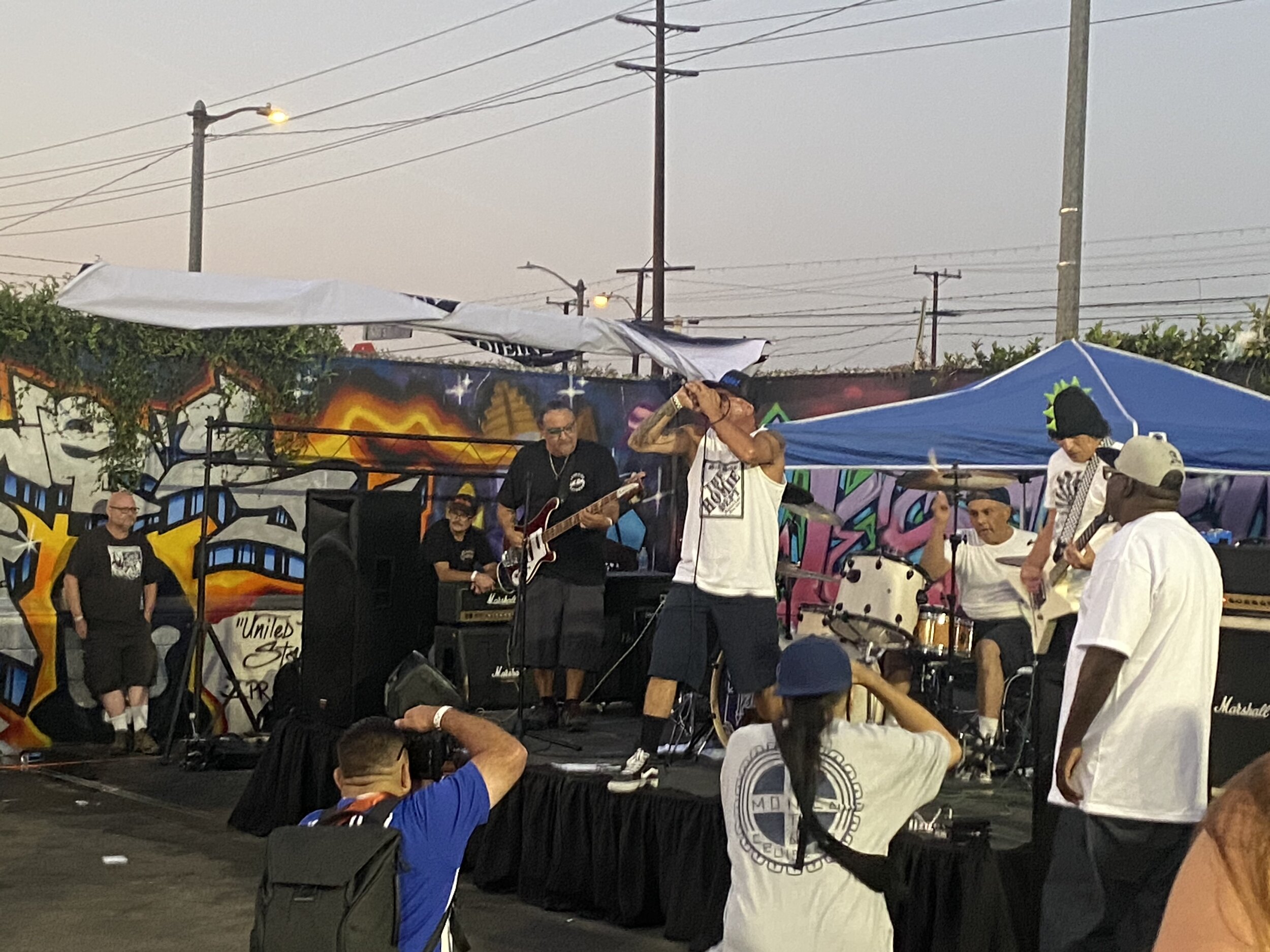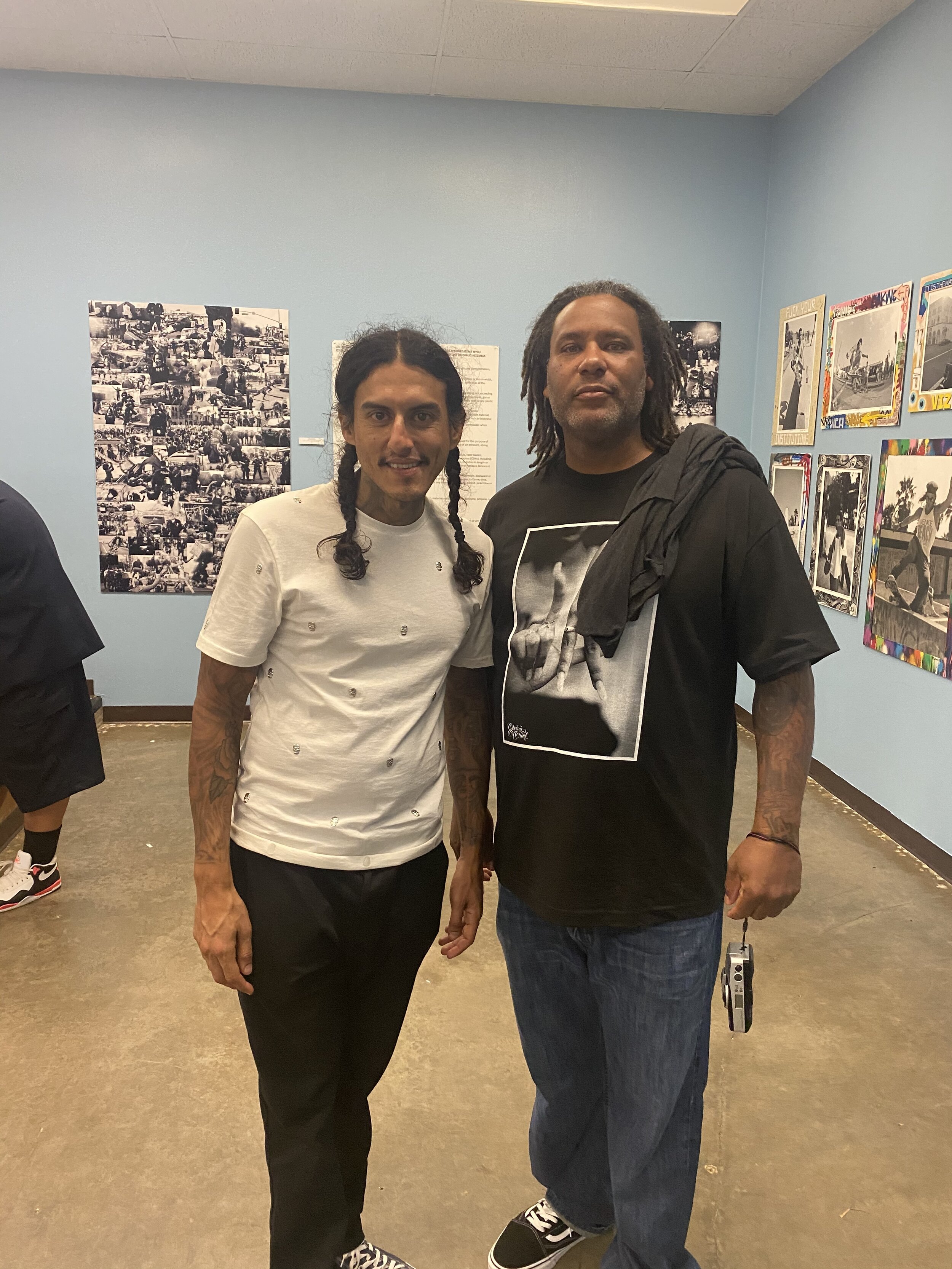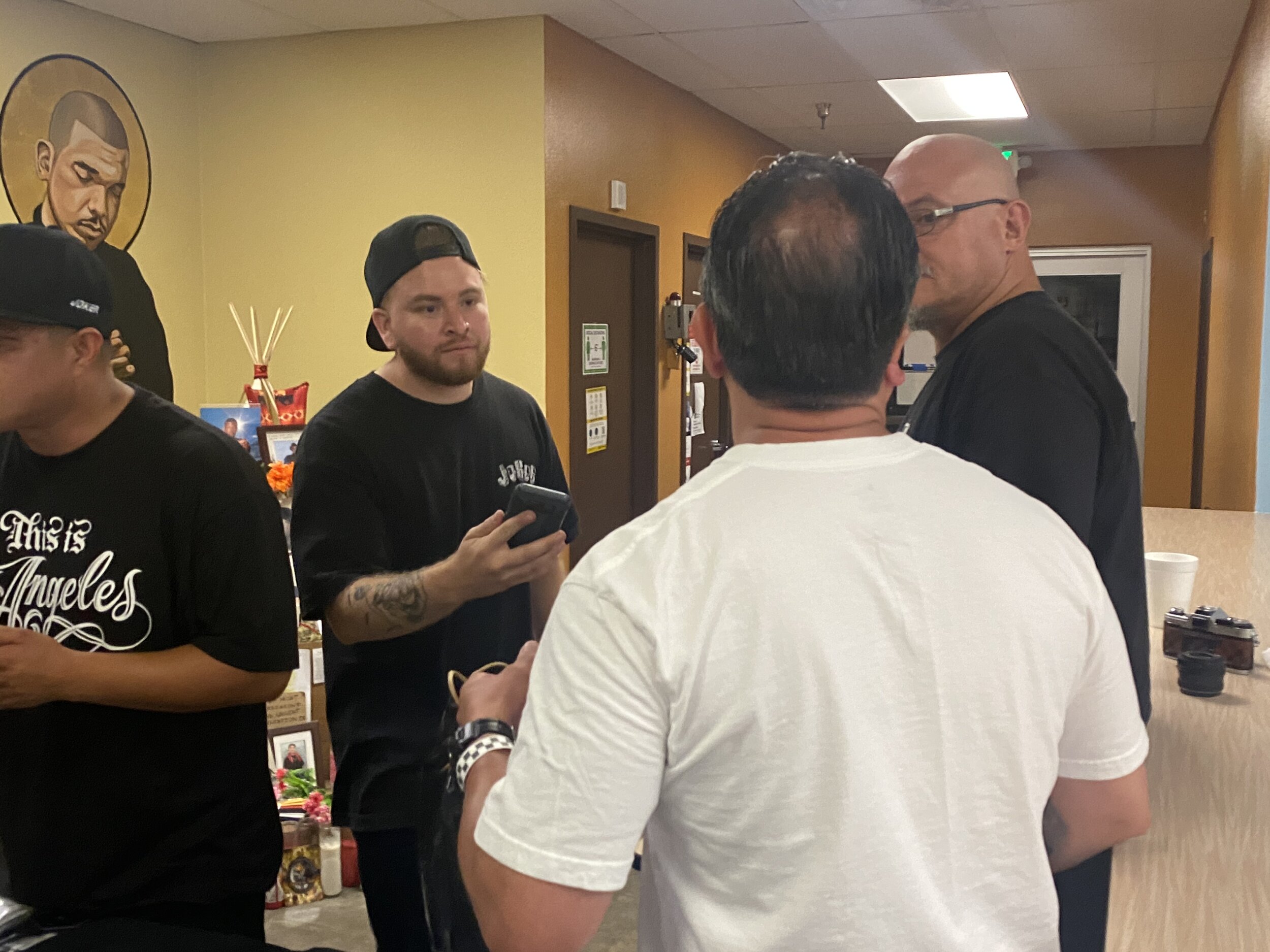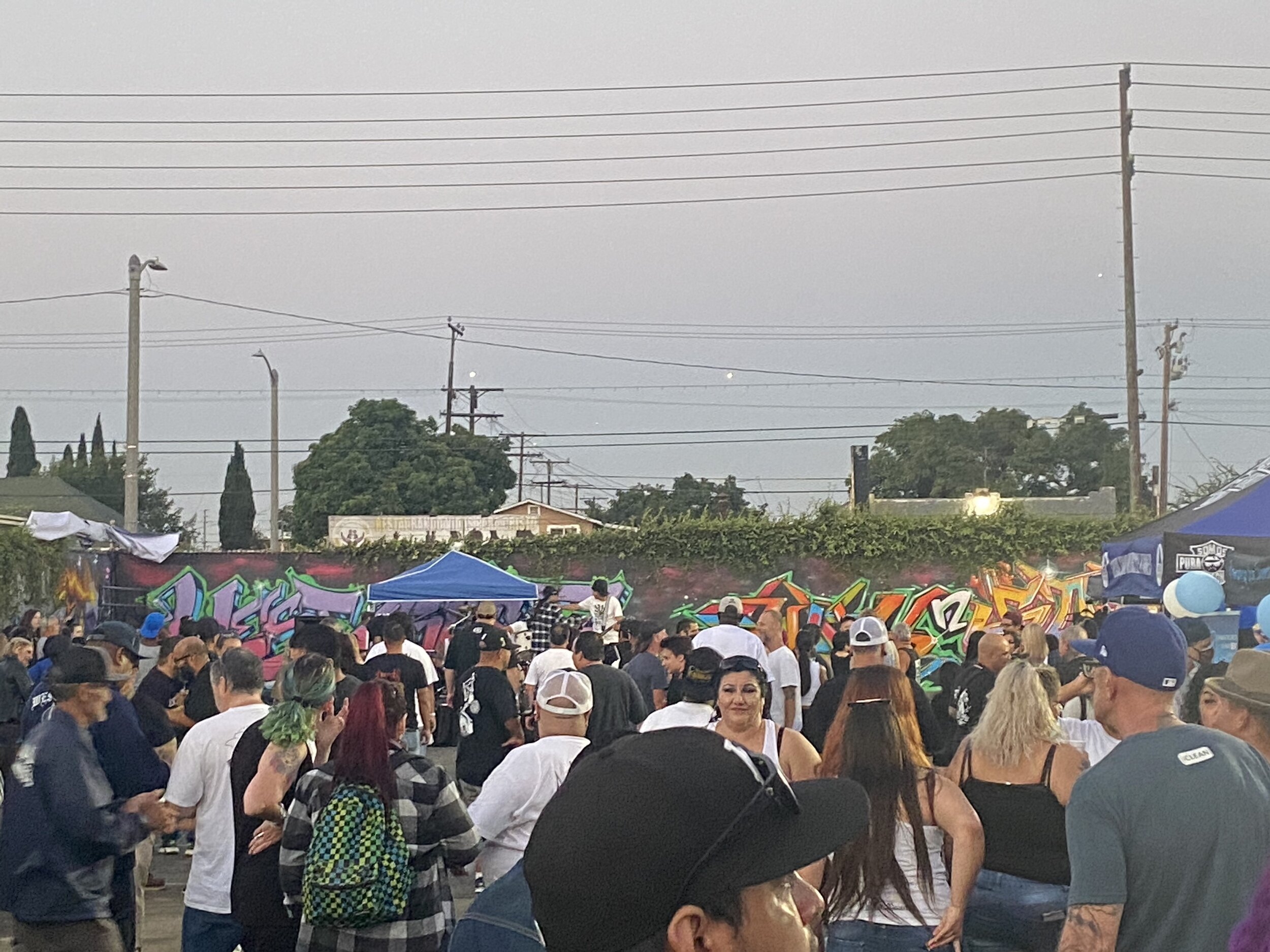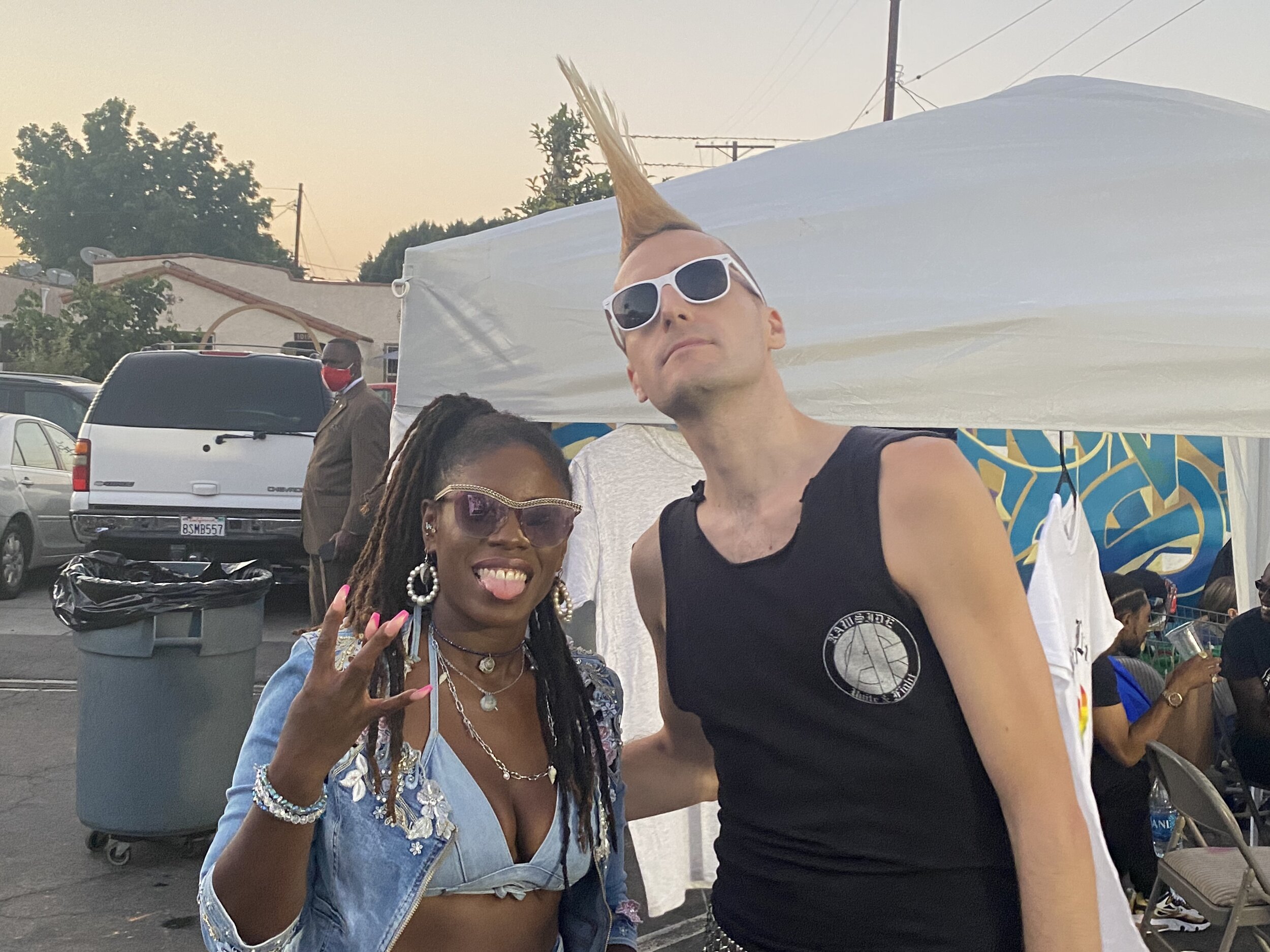Reviewed by Julian Lucas
There were so many gallery openings this past weekend throughout the city of Los Angeles and even in the burbs. Usually when we think of exhibitions, we think of the westside or the center of L.A., but curator Frankie Orozco changed that way of thinking this past weekend with 2 Live and Die in L.A. The event was held at the now closed Juvenile Justice Center Court in South Central Los Angeles better known today as Chuco’s Justice Center where the organization Youth Justice Coalition offers a wide range of programs to assist individuals who were once incarcerated, reintegrate back into society. The JJC closed its doors about 8 years ago.
The event was a success 2 Live and Die in L.A. brought out over 2500 people and featured live performances from bands throughout Los Angeles - Sin the Artists, Tunez 187, Migs Whiskey, Luicidal, Lil sodi, and Bella The Rapper. They played their sets perfectly against a colorful written wall, a perfect backdrop against the silhouette of tall skinny palm trees in the foreground and background. You definitely knew you were in L.A.
Vendors from all over lined the parking lot including L.A. Originals Taco Truck. if you got hungry, you didn’t have to leave. You could continue to kick back, enjoy the surroundings, eat tacos and get punch-drunk from drinking bottles of Jarritos all day and night.
Successfully strategic - the location fit Orozco’s vision. The works of over 40 Los Angeles photographers were intelligently and uniquely displayed, covering the hallways, rooms, along with the cinder-block walls of small rooms with large windows including a stall-less toilet revealing characteristics of a holding tank. To many of us remembered what it was like to be within the confines of those thick brick walls waiting for punishment.
The photographic imagery that covered the walls were nostalgic for most of us who grew up in Southern California. The work included individuals who struggled with homelessness and addiction, humanizing portraits of those whose reality was survival, just doing what they knew best to do so. Other works were drenched with bright, candy-colored lowriders, a trademark of Los Angeles, the city where lowriding was born.
What is most powerful and important about the 2 Live and Die in L.A. opening is that artists, who may have been caught up in the system at some point, changed the narrative by recharging a facility that was once used to penalize people.

